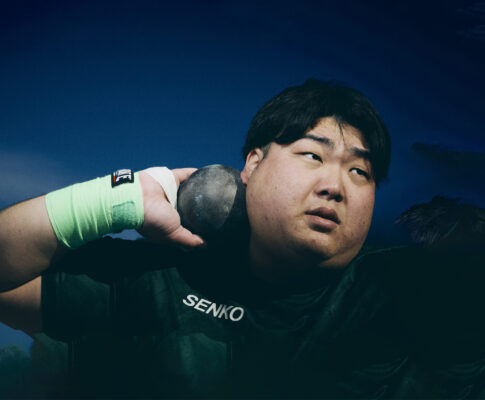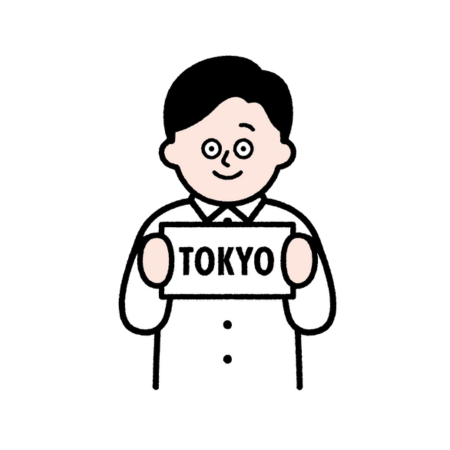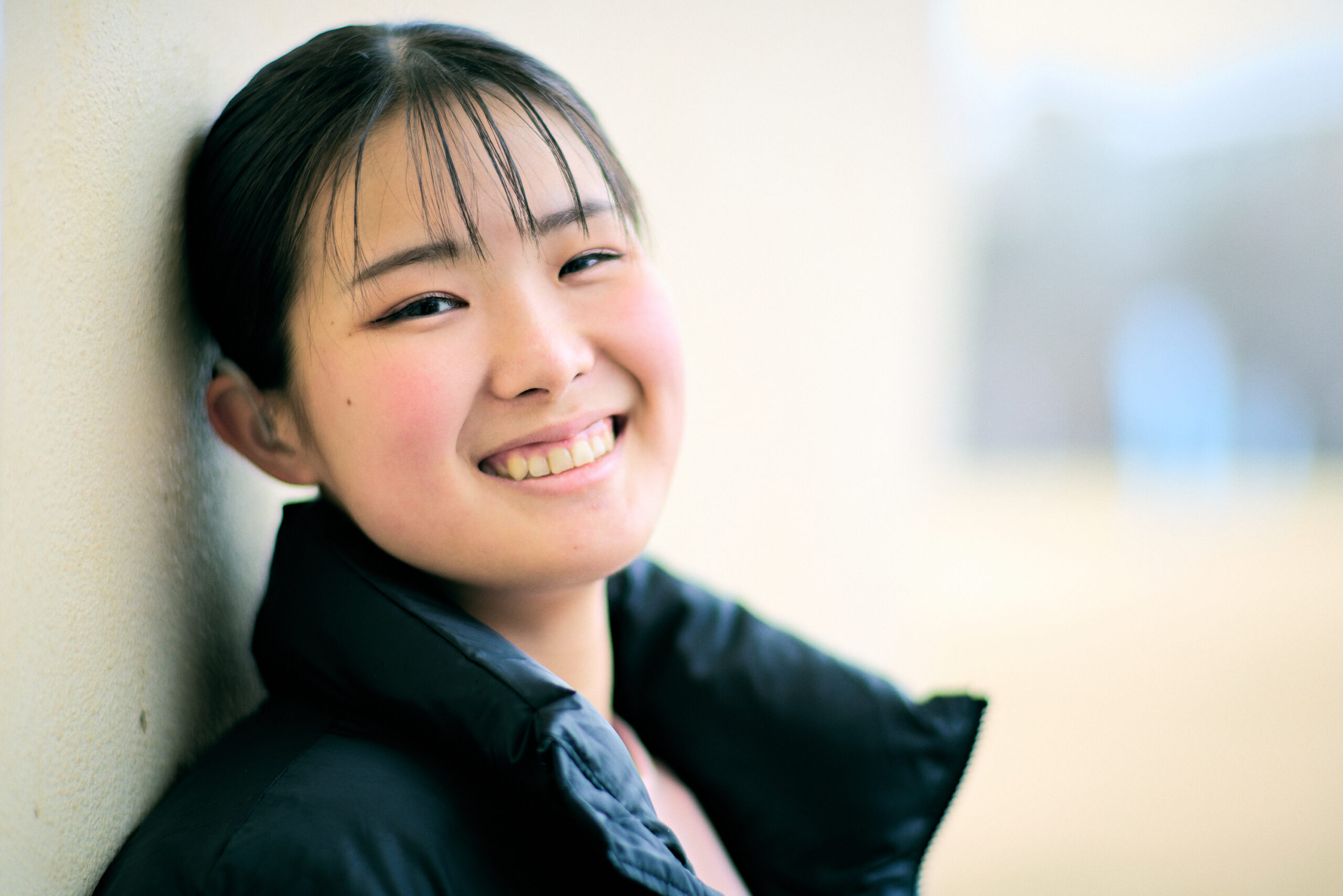
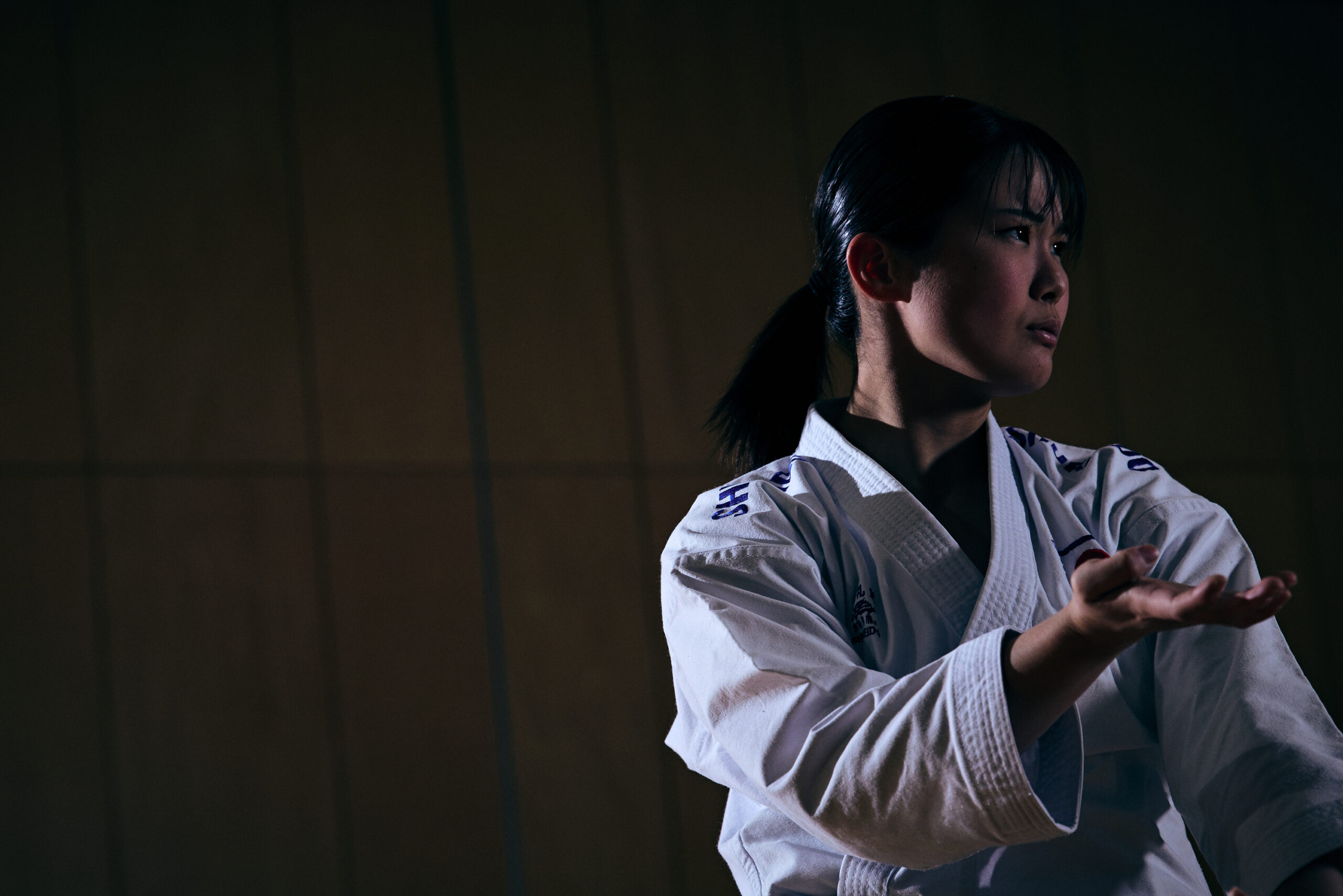
Ryo Ogura
Born in Saitama Prefecture in 2000.
Born deaf, she attended Sakado School for the Deaf in Saitama Prefecture. In high school, she attended a regular school and went on to Daito Bunka University. She started karate at the age of four and won numerous competitions in kata. She also tried kumite when she was in college and has continued to work mainly in kumite since then.
She made her debut at the Deaflympics in Caxias do Sul 2022, where she won gold medals in both kata and kumite events.
Currently, she works as a teacher at her alma mater, Sakado School for the Deaf, and trains every day with the aim of winning two consecutive events at the Tokyo 2025 Deaflympics.
I also went to the world of Dragon Ball
――How did you get into karate?
When I was 4 years old, I went to a local karate dojo with my brother, who is two years older than me. I don’t remember how I decided to go there, but I vividly remember thinking that “The karate uniforms are cool!” Also, I love fighting anime, and I used to watch Dragon Ball a lot. That’s why the kicks I saw in the dojo were really cool because they looked like Dragon Ball! So I thought, “I want to try it too.”
――When you first started doing karate, what did you find interesting about it?
I was able to feel myself improving through practice. I was happy when I was successful in a difficult technique in practice or in a match. I still feel the joy of improving, and that’s why my approach to karate has not changed.
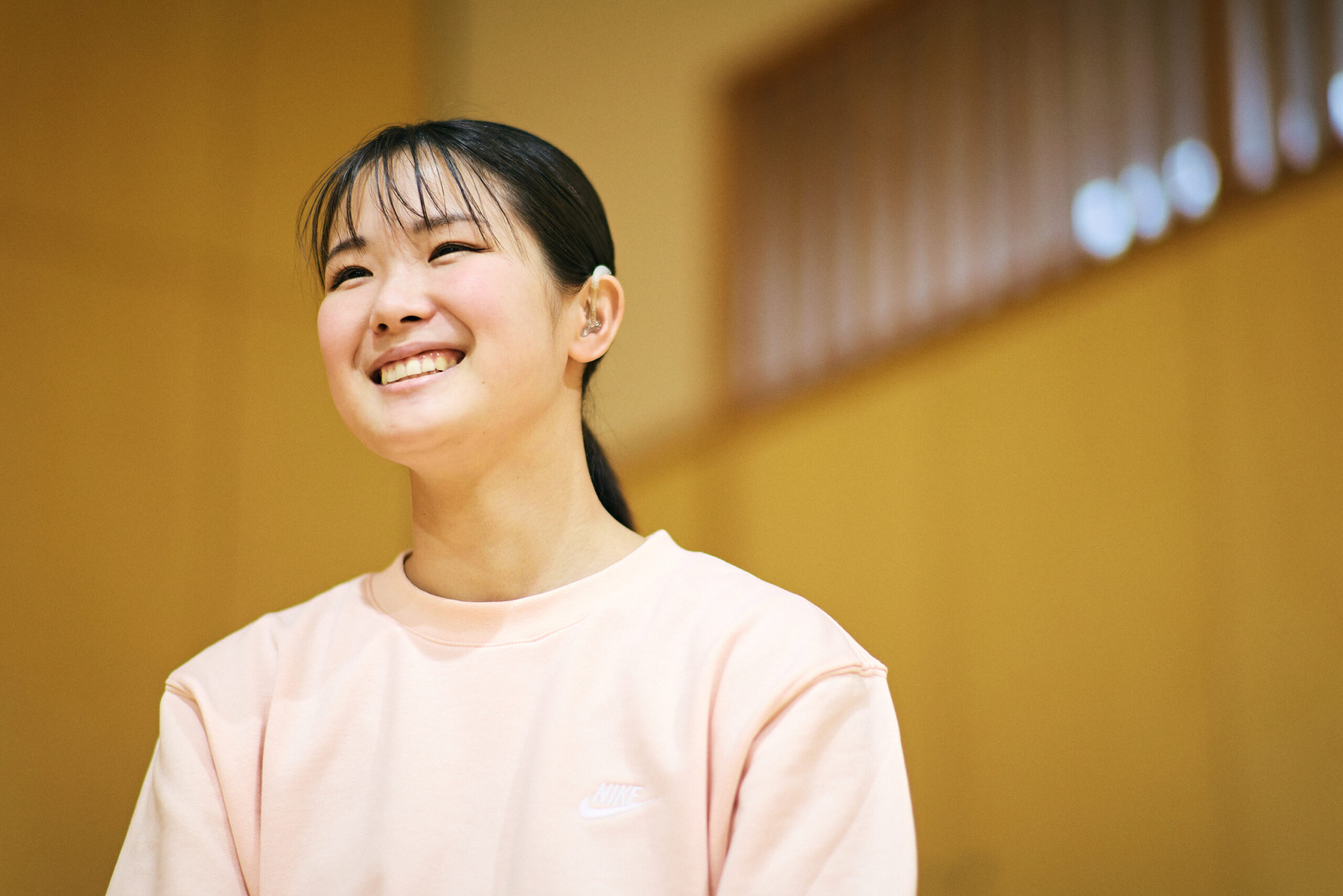

――Please tell us about your turning point in your karate career.
My awareness towards the sport changed when I was in the fourth year of elementary school, and I participated in a training camp with a hearing person to train athletes who can play an active role on the world stage. At that training camp, everyone’s attitude toward training was different. At the time, I was just practicing what I was told to do, but everyone else was thinking and practicing on their own. If there is something they don’t understand, they will go to the teacher to ask for guidance, and they are active and not passive like I am. No one skipped the simple practice and took it seriously. I was very surprised and impressed by that attitude. I wanted to be able to face karate in the same way, and that was why I was able to change my approach.
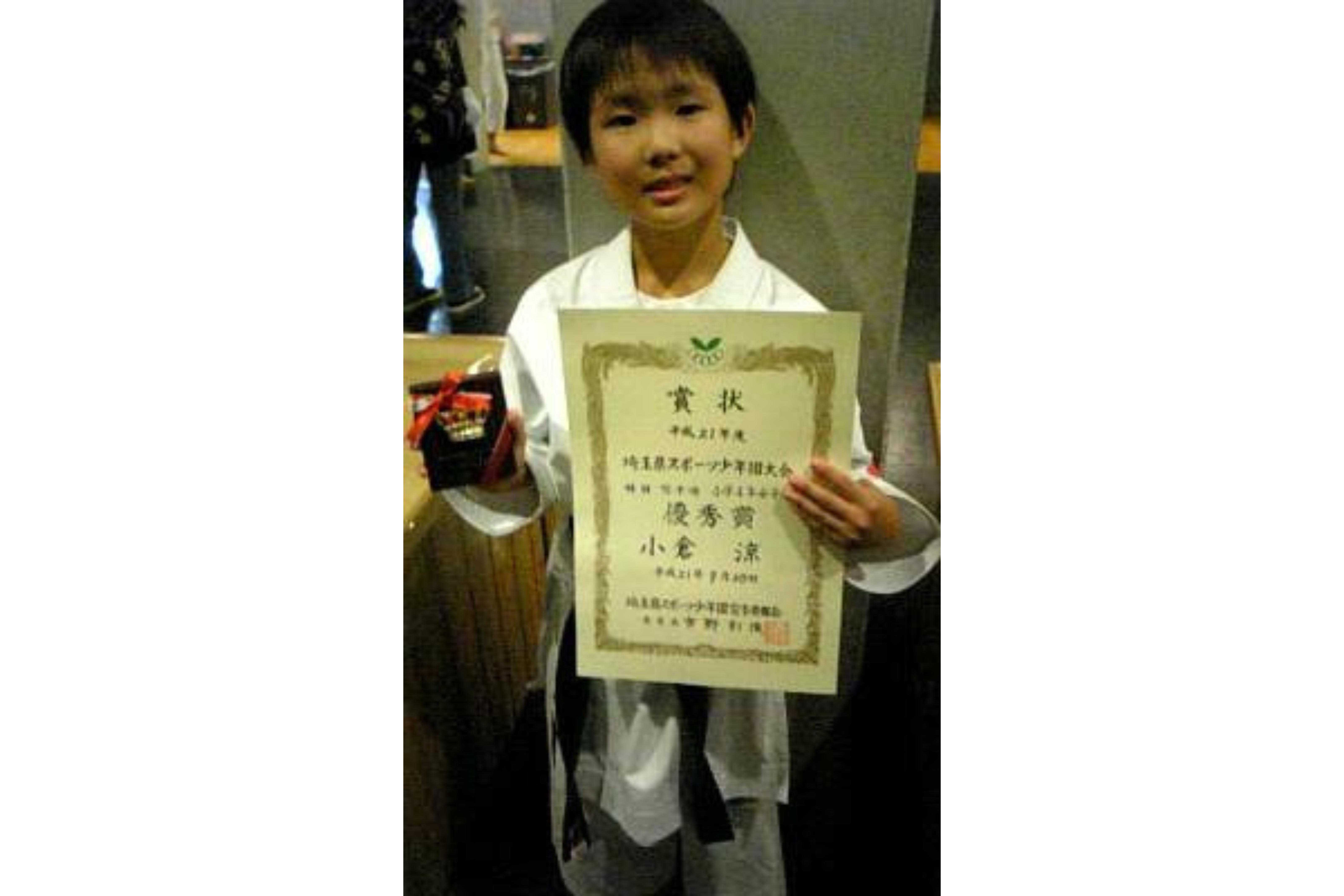
I could feel the difference in consciousness and the joy of it.
――What has changed?
The big change was that I became aware of karate as a “sport event” and started practicing by thinking for myself. At the training camp, I was able to learn the in-depth aspects of the technique. I started to think about how my body moved, and I really enjoyed the time I spent thinking about the details one by one. After participating in the training camp, I felt that I had grown both physically and mentally. Trying and failing and trying again. I started to enjoy the process of changing and improving myself by practicing repeatedly. Karate has become even more fun.
――Since entering university, you have also tried kumite. What made you start it?
Until high school, I was only doing kata, but towards the end of high school, I was a little sluggish and stuck, and I didn’t know how to improve further. I had taken a break from karate to focus on my university entrance exam, but when I entered the university and was about to start karate, my motivation to work on kata had decreased… When I wanted to continue karate but was feeling frustrated, a senior member of the dojo happened to say, “Let’s do kumite together.” When I tried it, it was surprisingly interesting. Until then, I had always refused to do kumite because it hurt and I was scared of being beaten. However, as my seniors taught me the karate tactics, I was hooked on the depth and thrill! That’s when I started to get serious about kumite.
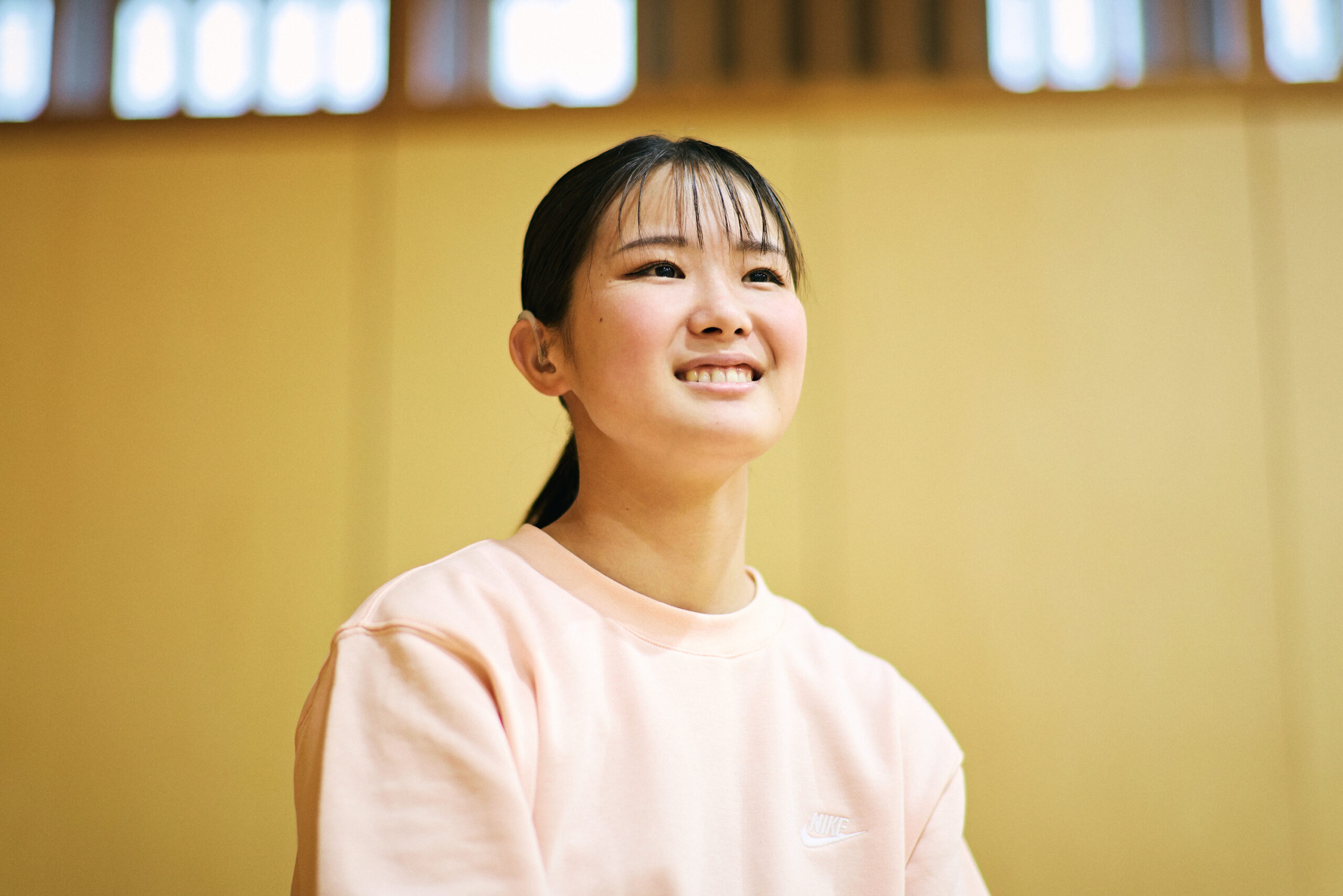
――What kind of impact did you have by working on kumite?
First of all, kata is very important because it is the basis of karate movements. On top of that, in kumite, one of the referee’s criteria is whether the thrust is a “beautiful technique” or not. That beauty cannot be created unless you learn the basics of kata. In order to be able to achieve scores, it is necessary to learn the basics. In the end, both kumite and kata come down to the basics. Since I started kumite, the amount of time I spend practicing kata has decreased a little, and I have moved away from kata for a while, but by being away, I have become more motivated to try kata again. Of course, I was able to go back to the basics, but it was also good that I was able to rekindle my motivation for karate by trying both kata and kumite.
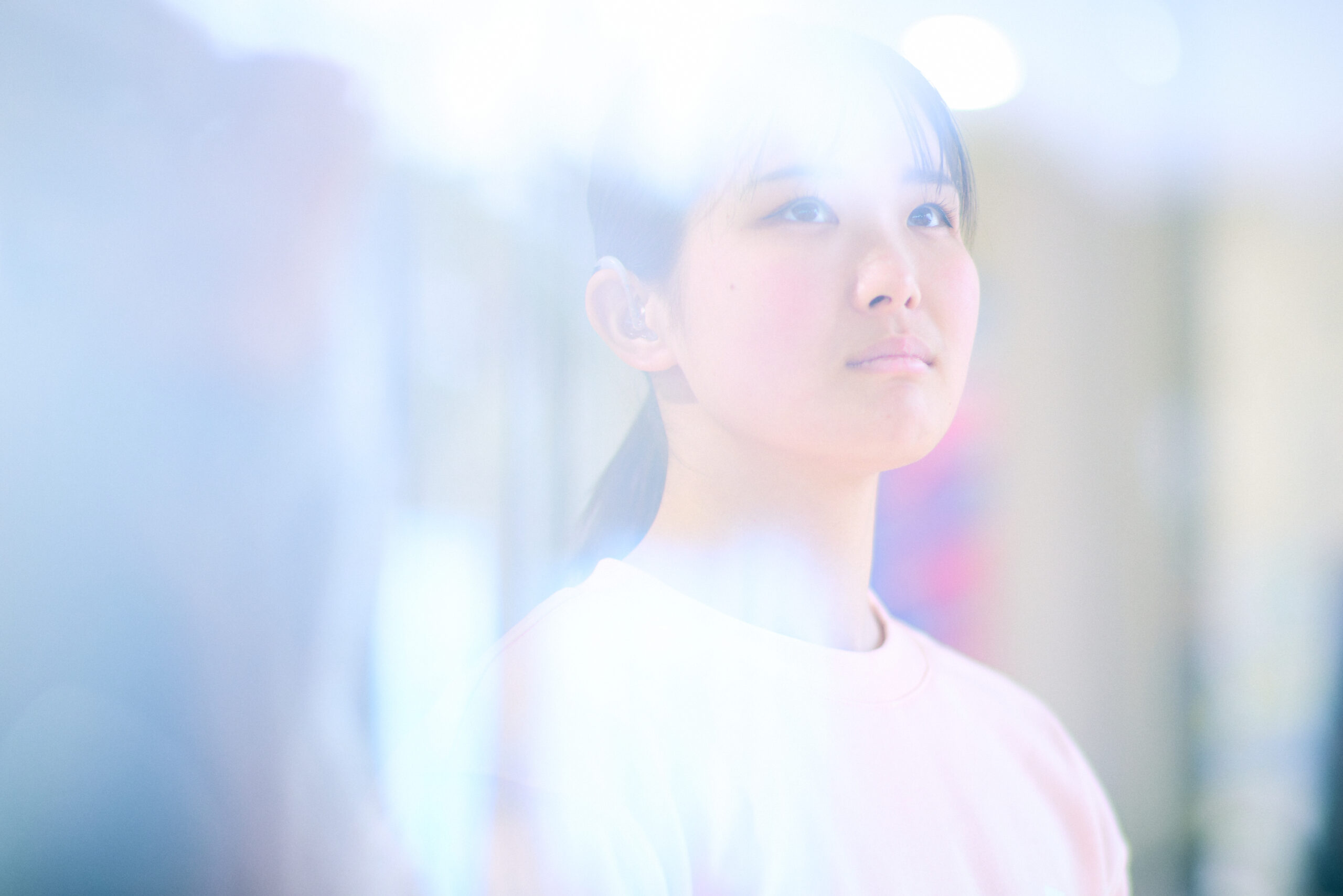
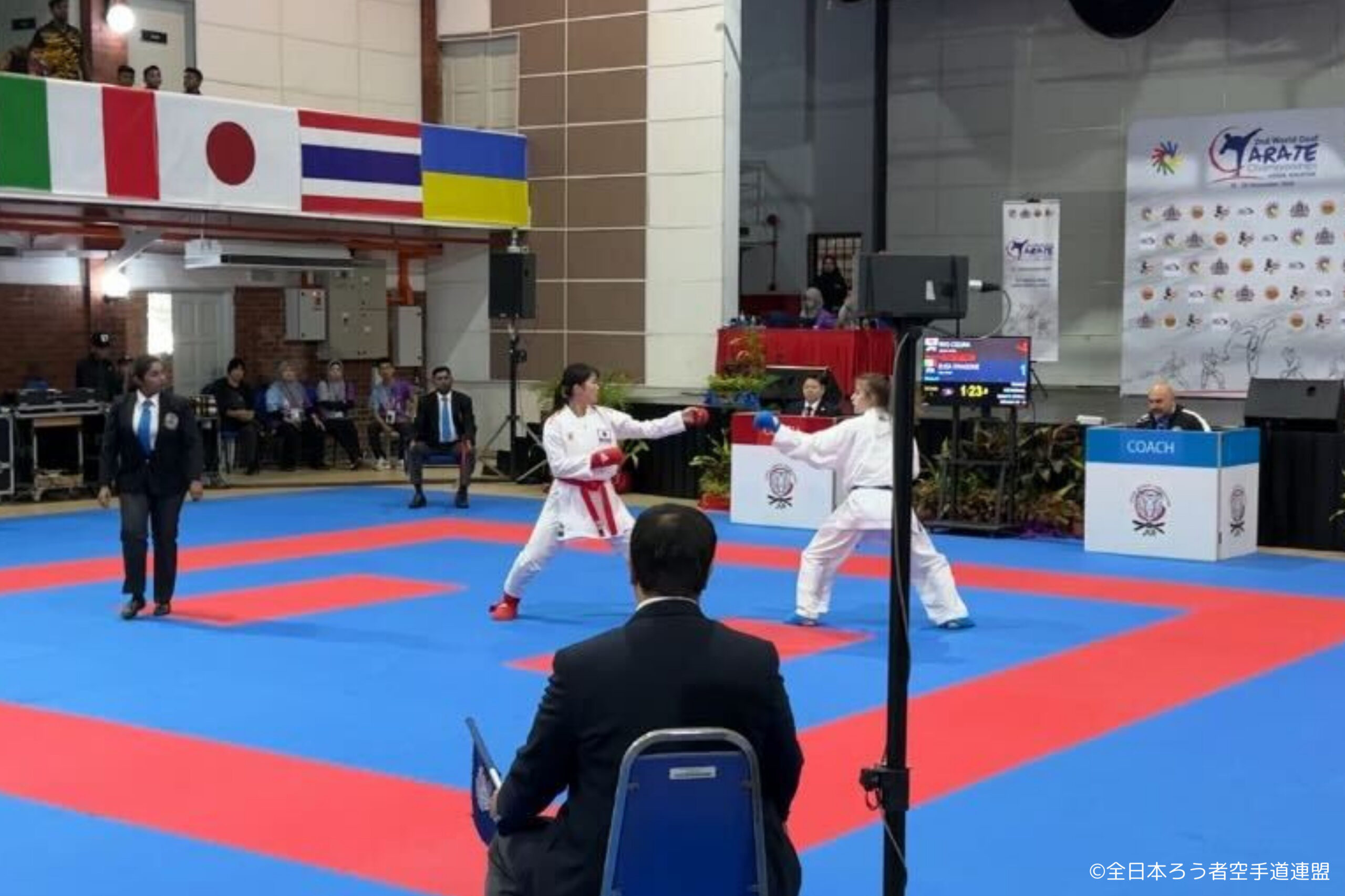
But kumite gave her a new stimulus.
The lack of a goal is the charm of karate
――I heard that there are 102 official katas. I was surprised by the large number of katas, but how many katas have you mastered?
I’ve mastered about 20 of them from off the top of my head. There may be a little more, but… I’m the type of person who doesn’t go on many adventures, and I’m the kind of person who wants to pursue one form of kata. So I don’t remember many types of katas. There are many athletes who have mastered more.
――There seems to be no limit when learning kata, but is there a finished style that you envision?
In terms of kata, I don’t think there is a finished style. For example, even if I could hit the same level of kata as Nozomi Shimizu, who won the silver medal at the Tokyo 2020 Olympics, I don’t think I would be satisfied with that. It is an event where there are endless elements to pursue, and that is why it is one of the charms of kata to see how far you can pursue it without compromising on yourself.
――How about kumite?
Kumite is an event that can only be done when there is an opponent, so it is not possible to pursue it alone like kata. It’s hard to say, but even if you’re a little bad at kumite, it is up to one’s ingenuity whether you can win or not. In that sense, there is no one who can win 100% with kumite. That’s one of the interesting things about kumite, isn’t it? It is a style that is different from kata, and there is an element that can be pursued. There is no such thing as 100% completion or perfection in either kata or kumite and both have no choice but to devote a lifetime to training. The fact that there is no such goal is the charm of karate.
――At the last Deaflympic Games, Caxias do Sul 2022, you won gold medals in both events, kumite and kata. Did you have confidence?
No, not at all… It was my first international tournament, so I didn’t know the level of the other athletes or my own. Until it started, my feelings were “Will I be able to win?”, or “I think I’m going to lose in the first round.” However, once it started, I was able to concentrate on the competition in front of me, and in the end, I fought with the mindset of “I will just do my best.”
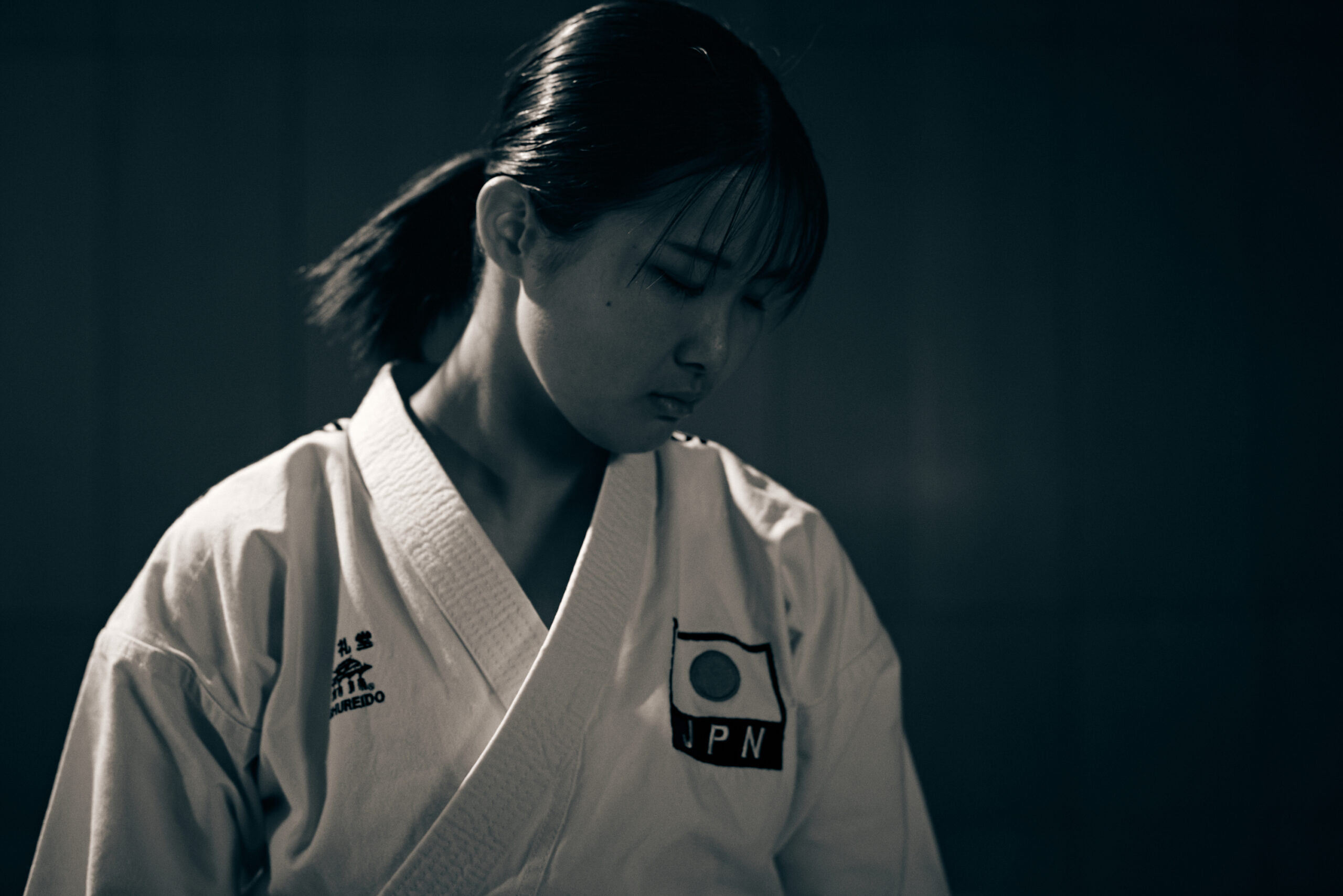
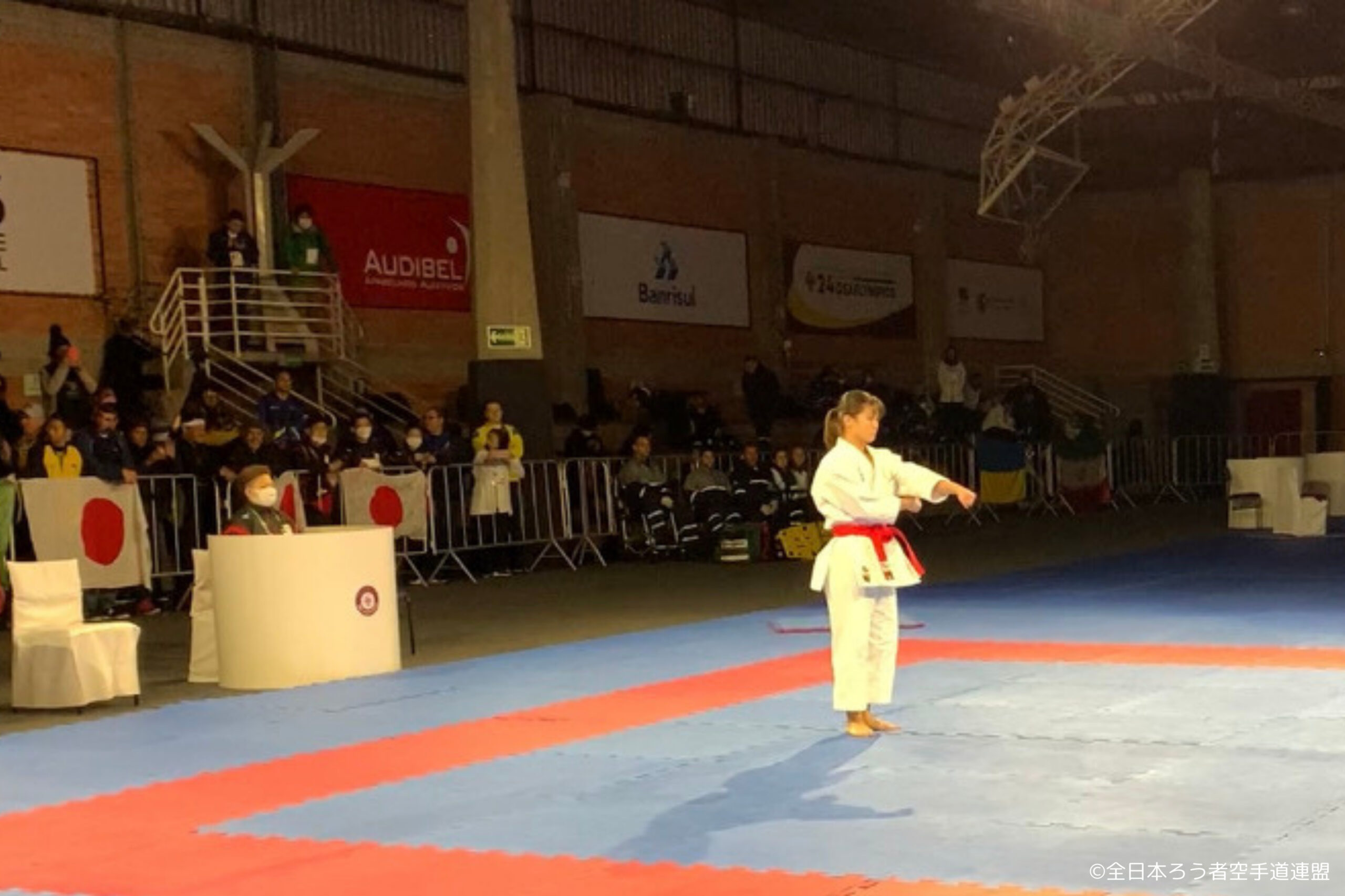
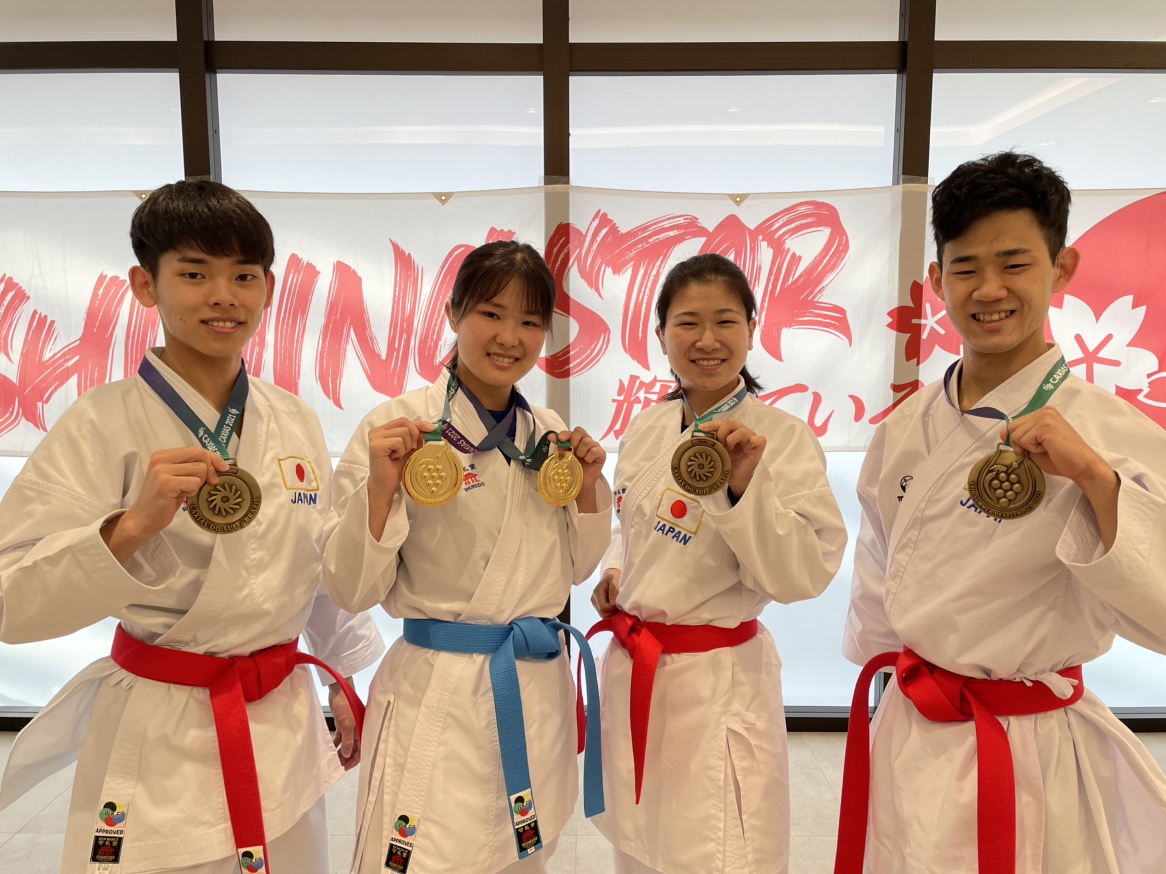
The feeling of accomplishment at the event was…
――In such a situation, you won a gold medal in both kata and kumite.
Yes, I won, but I really didn’t feel it… When I returned to the hotel after the match, the hotel staff congratulated me and I received a lot of LINE messages from my friends and acquaintances. When I received congratulatory comments from various people after returning to Japan, I felt a little like, “Oh, I won”. I still don’t feel like I’ve become the best in the world.
――It’s a little surprising that you still don’t feel that you have won.
No, no, it still feels like, “Am I really a world champion? Am I really the best in the world!?”
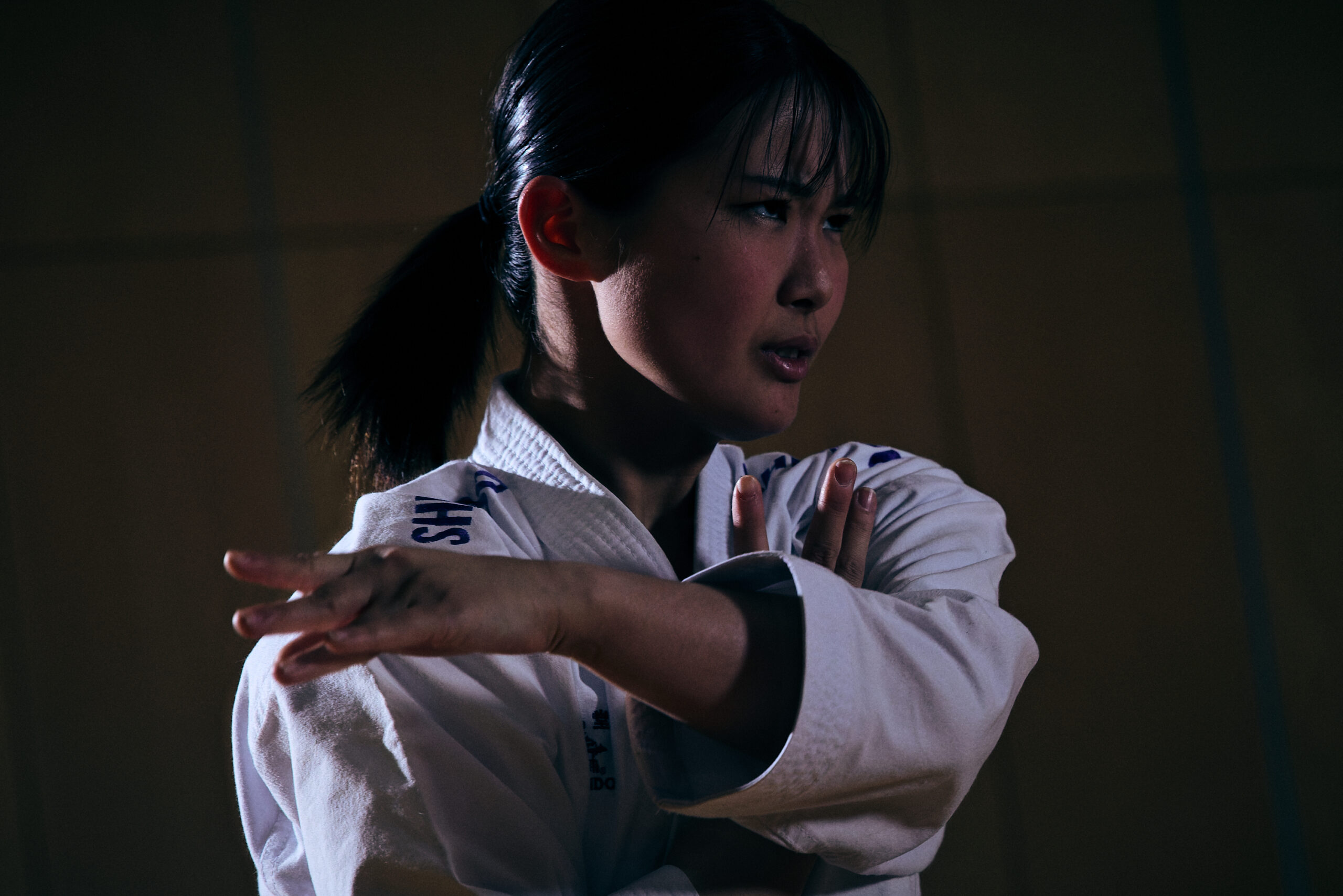
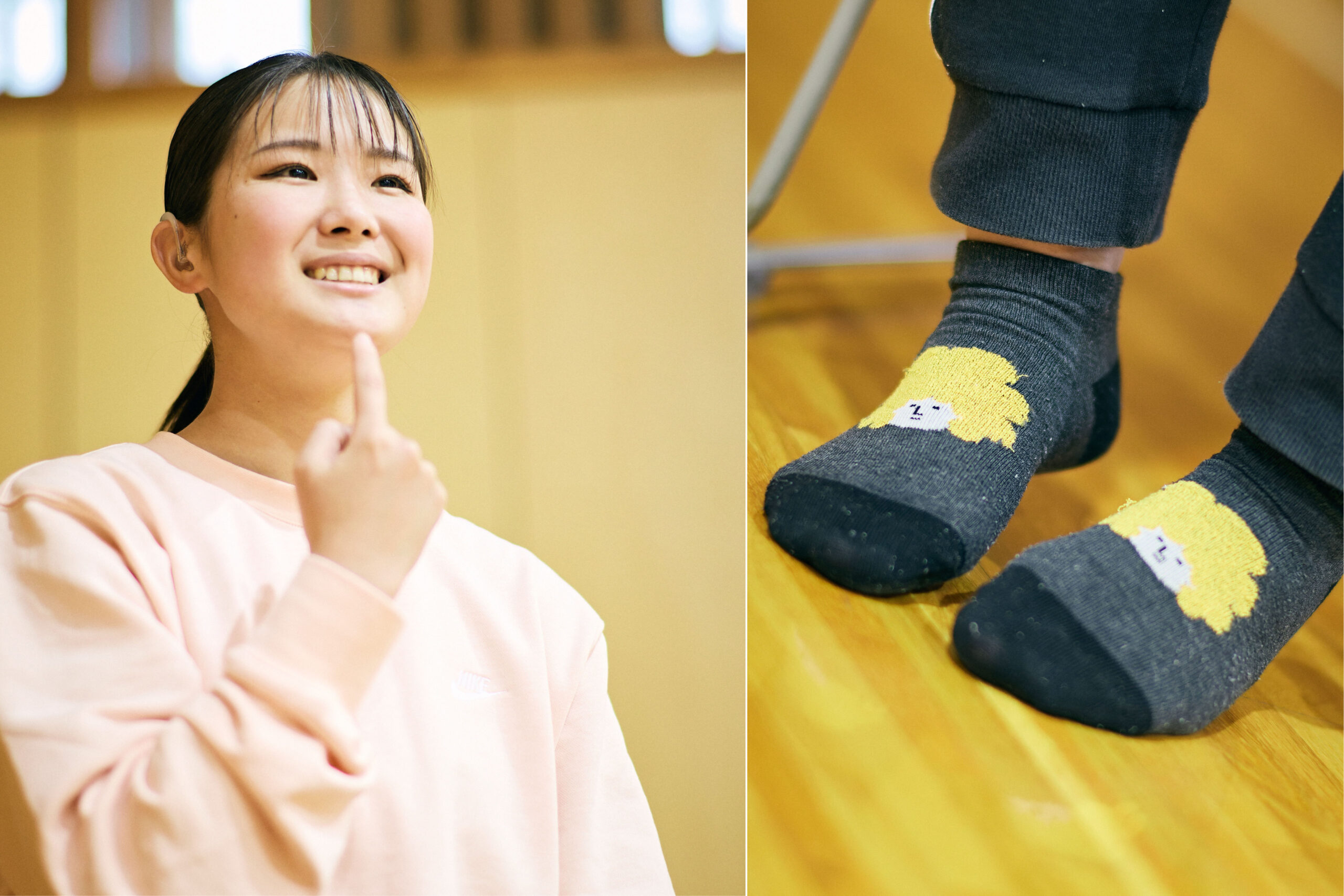
There is definitely a gap.
A change in consciousness from passing one’s finger forming the ‘person’ kanji (人) in the palm of the hand, which is a Japanese belief used to relieve anxiety and nervousness
――What do you think is your own strength?
In the case of kata, I think it’s “my powerful strength”. I have a nice physique among girls, so I think I can show my strengths. Also, my kata style is called “Gojuryu”, which is one of the main traditional style of Okinawan Karate, and I feel that the rather heavy kata suits my body. The ability to perform such heavy techniques with power is one of the strengths of my kata.
What is my strengths for kumite? I’m not fast in speed, and I don’t have any particular skills… My kumite is very simple. If you’ve seen it, you’ll know that I am really, really, doing simple kumite. I don’t have a skill that is easy to understand and cool, so I feel sorry for the people who always come to see me. I can’t help but think “Is it fun to watch my kumite?”. I’m good at thrusting, so I stack them one by one to accumulate points, and then I win. Oh, I think the timing of my thrust is good! Good timing, this may be my strength.
――At the Tokyo 2025 Deaflympics, you will be the defending champion. What do you think about it?
There’s a lot of pressure. Even in the Japan national team, I am considered to be the one who wins. However, at the World Deaf Karate Championships held in December last year (2024), I was second in kata. In fact, this losing experience took a little bit of pressure off me. At the Tokyo 2025 Deaflympics, I will be able to compete as a challenger again, so I am a little relieved.
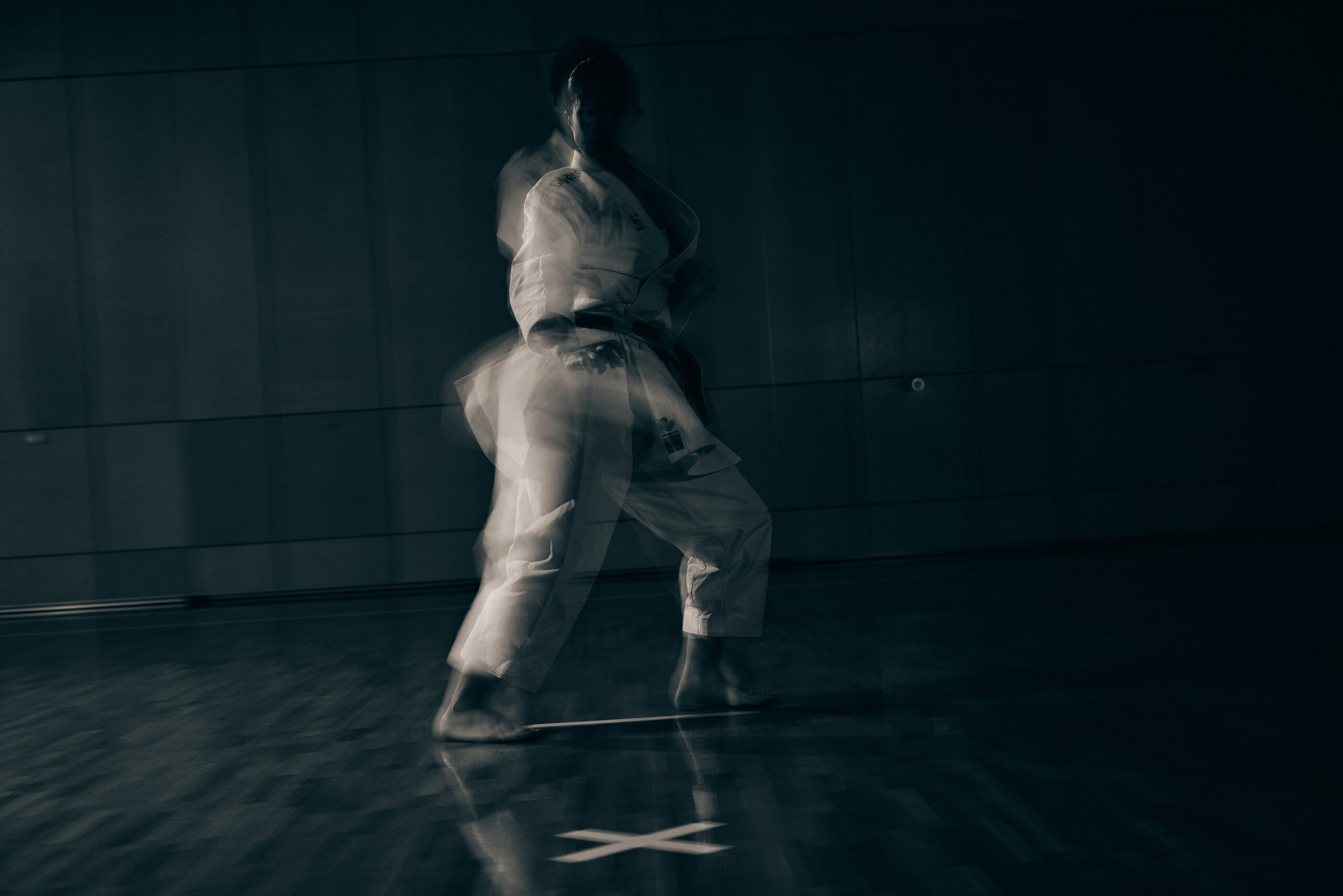
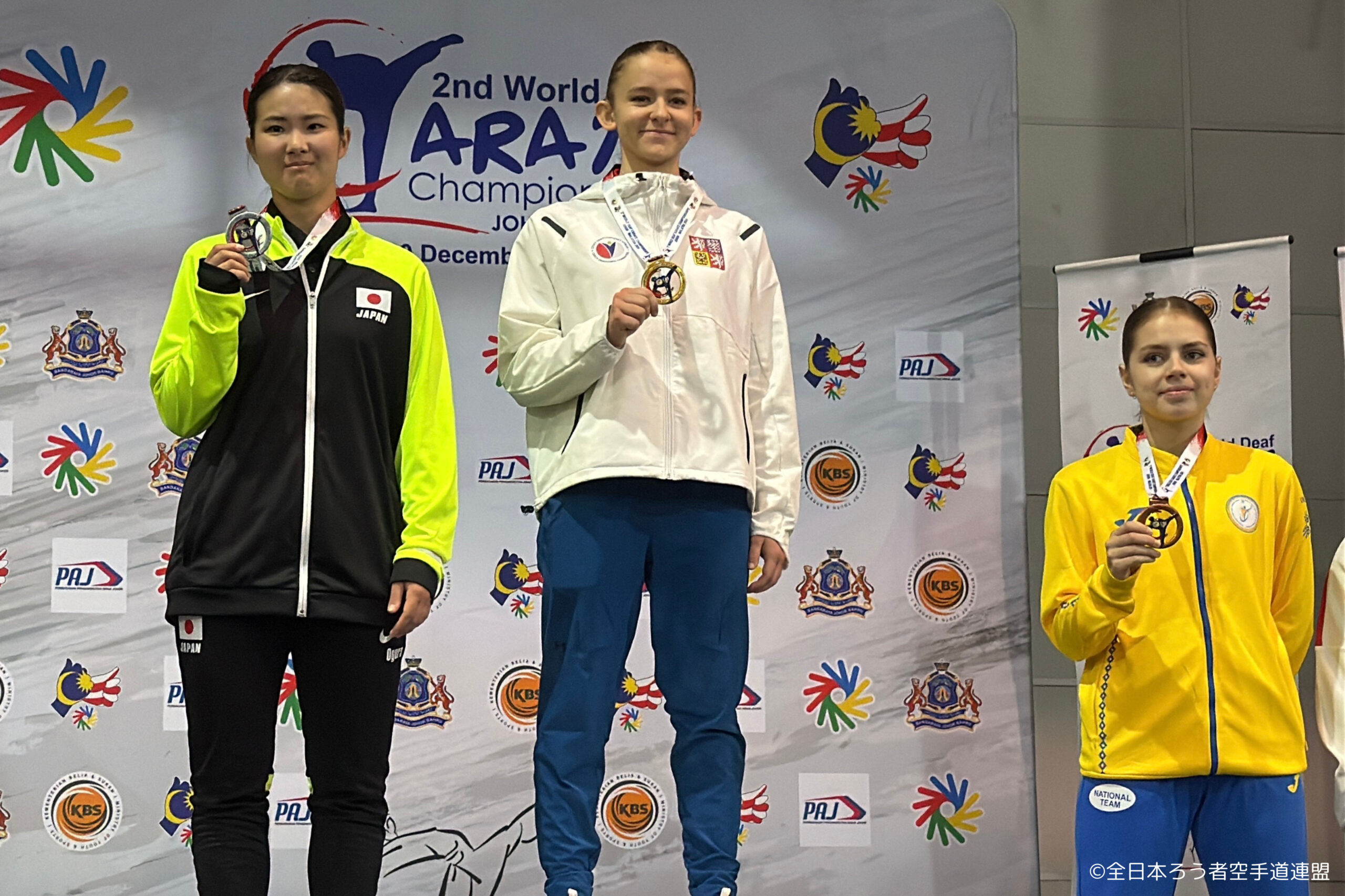
――You demonstrated your abilities on the big stage by winning the gold medal at the 2022 Deaflympics, where you participated for the first time. What do you think is the secret to this?
That’s what I want to know. I’m a very nervous type, and I’m naturally vulnerable to tension, so my body becomes stiff.
――How do you relieve the anxiety and nervousness in such cases?
Writing the kanji for “person(人)” on the palm of my hand and drinking it relieves tension. I know I’m vulnerable to tension, so I’ve been researching and trying various ways to relieve tension. I’ve done a lot of other things, but it’s not that effective.
However, at the World Deaf Karate Championships the other day, my coach told me, “A match is not a place to show the results of your training, but a place to ‘test’.” The word “match (試合)” combines the kanji character for “trying(試)” and “fit (合う)”, right? Try what you’ve practiced, and if you don’t get the results you want, try something different. You just have to keep doing that, and that’s why it’s going to lead to a higher level. When I heard that, I felt a sense of comfort in myself.
――It was a way of thinking that you had never had before.
Match = “a place to try each other”. Maybe it was because of those words, I was able to face the match easily at the World Deaf Karate Championships without getting stiff. I always check what I’ve been practicing before a match, but this time I was more conscious of it as a place to try things out, so I tried to change the form of my kata on the spot. When I actually changed it, I was so busy doing what the coach told me to do that I wasn’t nervous. I really didn’t have time for that.
Sometimes I get stiff due to nervousness, and the fact that I have been able to create a kata that I am satisfied with until now is enough to fit in one hand. There are very few. But this time, I was able to make a kata that I was satisfied with. I’m really impressed by that. I want to experience that excitement again, so I want to train myself more both physically and mentally.
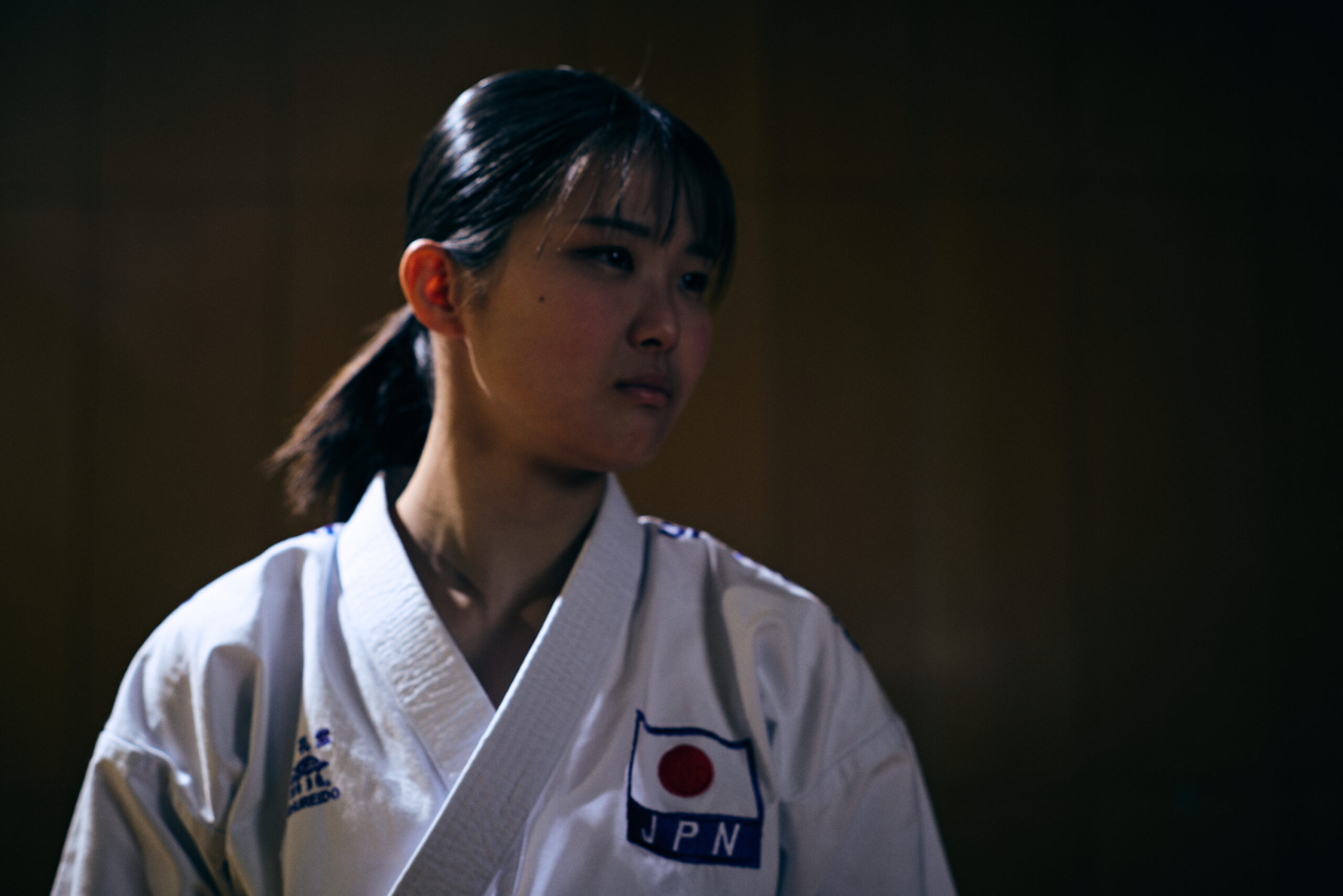
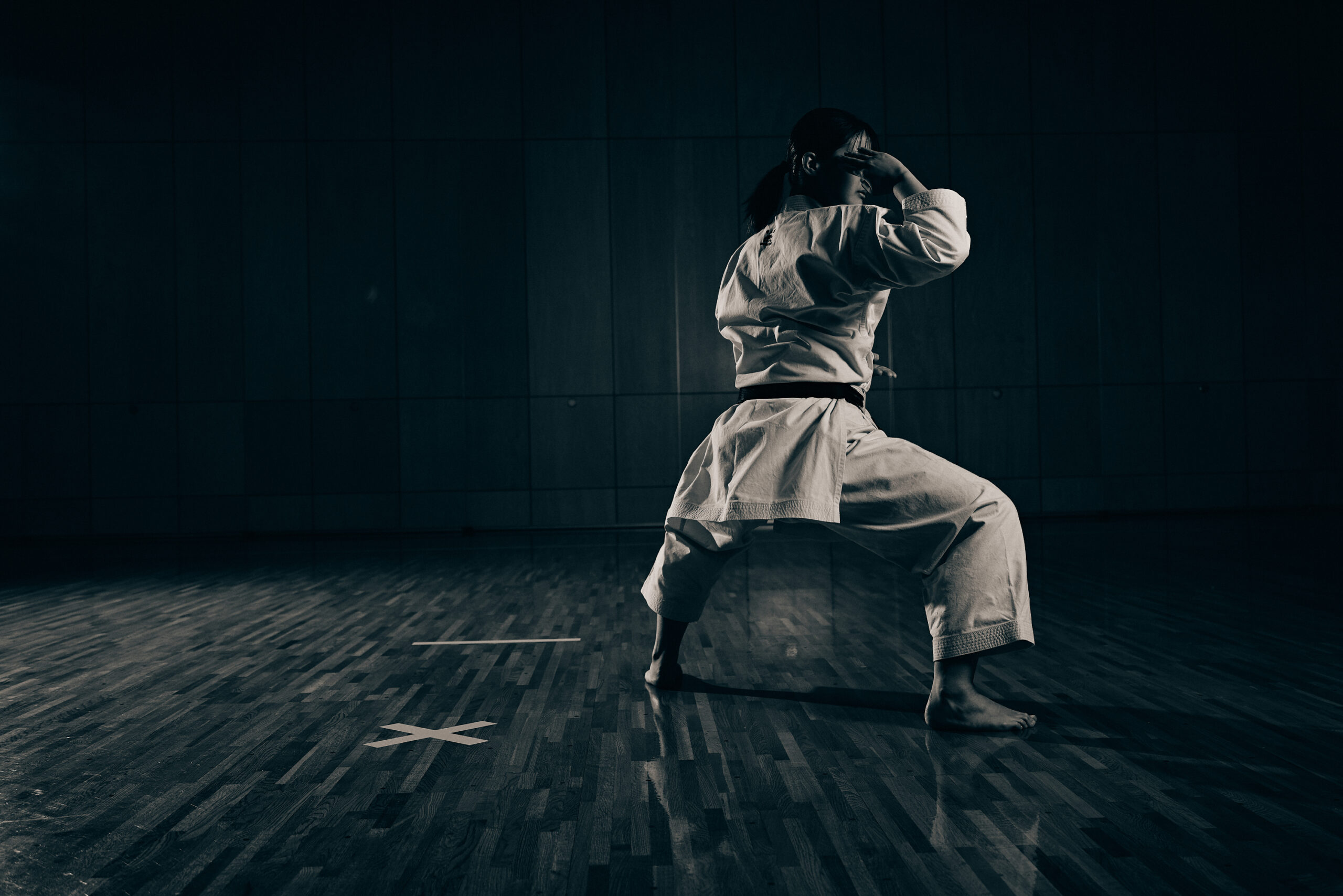
Touching the hearts of the viewers
――How did you feel when you found out that the Deaflympics would be held in Tokyo?
When I first found out, it was when I had to concentrate on the Caxias do Sul tournament, so I couldn’t think about participating at all, so I was like, “Oh I see.” I was thinking to consider about it after the Caxias do Sul tournament, so to be honest, I didn’t really feel anything.
――When did this suddenly occur to you?
Recently… I suppose? It’s finally getting to occur to me little by little. After the Caxias do Sul tournament, I participated in several international tournaments, and I finally started to feel it. I’m getting excited about the fact that deaf athletes from all over the world will gather in Tokyo.
――What are your expectations for the Deaflympics to be held in Tokyo?
Awareness of the Deaflympics in Japan is still low, so I hope that holding the tournament in Tokyo will bring it closer to 100%. I hope that the Tokyo 2025 Deaflympics will give people an opportunity to learn about deaf people and think about what they can do for them. I hope that the Tokyo 2025 Deaflympics will not be the goal, but the start of a new society.
――What are you looking forward to at the Tokyo 2025 Deaflympics?
Since this is the first time the tournament will be held in Japan, the people who have helped us so far will be able to watch the match at the venue. The Deaflympics are a stage of dreams for deaf athletes, and I want to show everyone who supports me that I will win on that bright stage.
――What do you want your supporters to see?
The sharp and powerful style of kata. Even those who have never done karate can understand it, and I think you can enjoy it even if you watch it for the first time. Especially when you watch it live, you will be overwhelmed by the atmosphere created by the athletes. There is a power performance in the venue that cannot be conveyed through the screen.
Kumite unfolds quickly, and in the blink of an eye, the match seems to have already been decided. The highlight is the negotiation techniques with the opponent. Pay attention to the number of moves that unfold at a great speed in a short match time, and the tactics of how to make them effective hits. I would be happy if I could touch the hearts of those who watch it and say, “I want to try karate, too.”
――It would be great if more people started karate seeing your success.
Karate often has a scary image, but if you try it, it’s more interesting than scary, so be sure to check it out! You can continue to do it even if you become a grandpa or grandma, and there are actually elderly people who have a nice kata. Even people in their 70s ~ 80s are fit as a fiddle without bending their hips, and they all look more energetic than young people. It also helps to extend healthy life expectancy, so I would like you to try it once.
――What are your goals for the Tokyo 2025 Deaflympics?
Of course, to win gold medals in both events: kata and kumite. I want to show my daily gratitude with the best results!
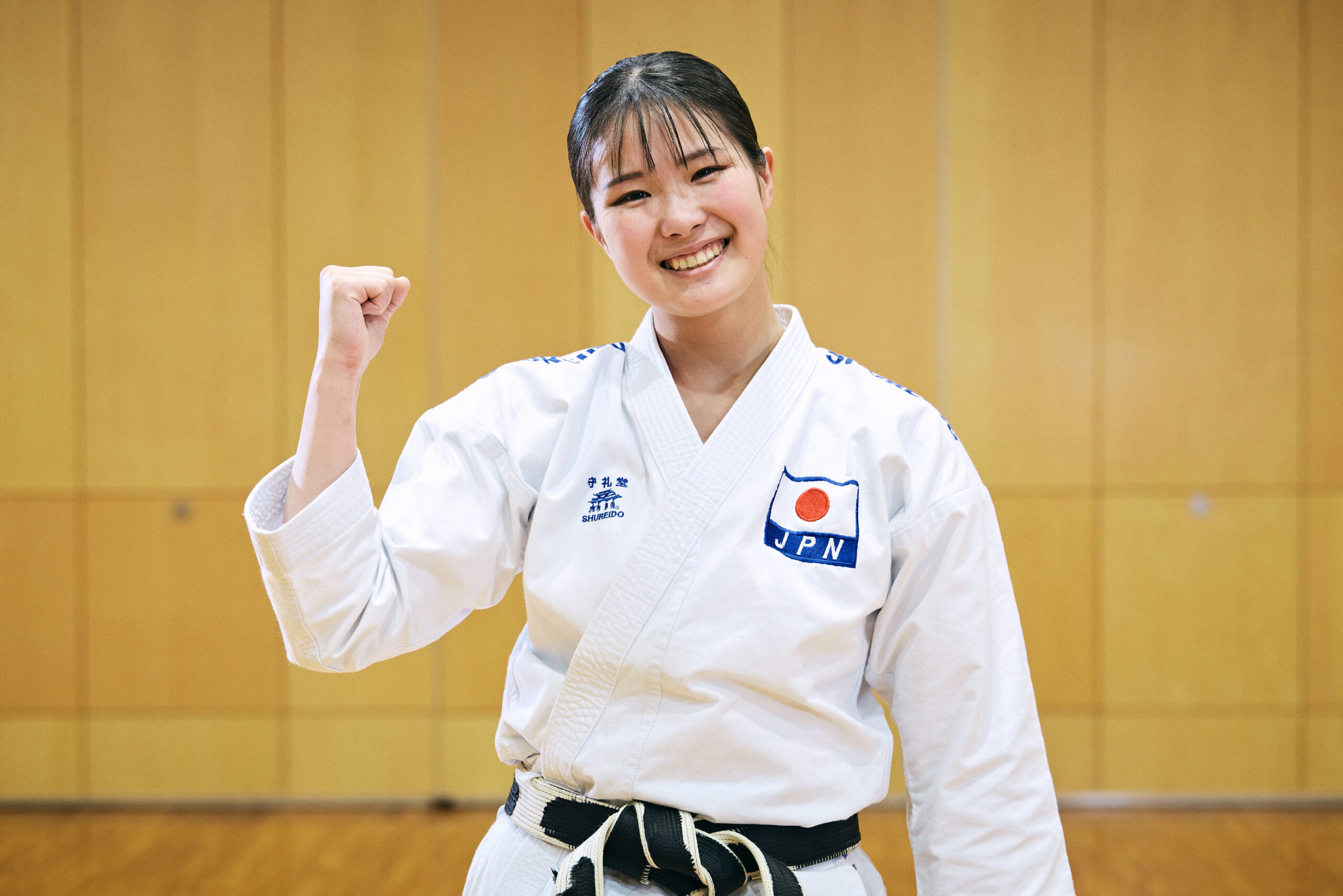
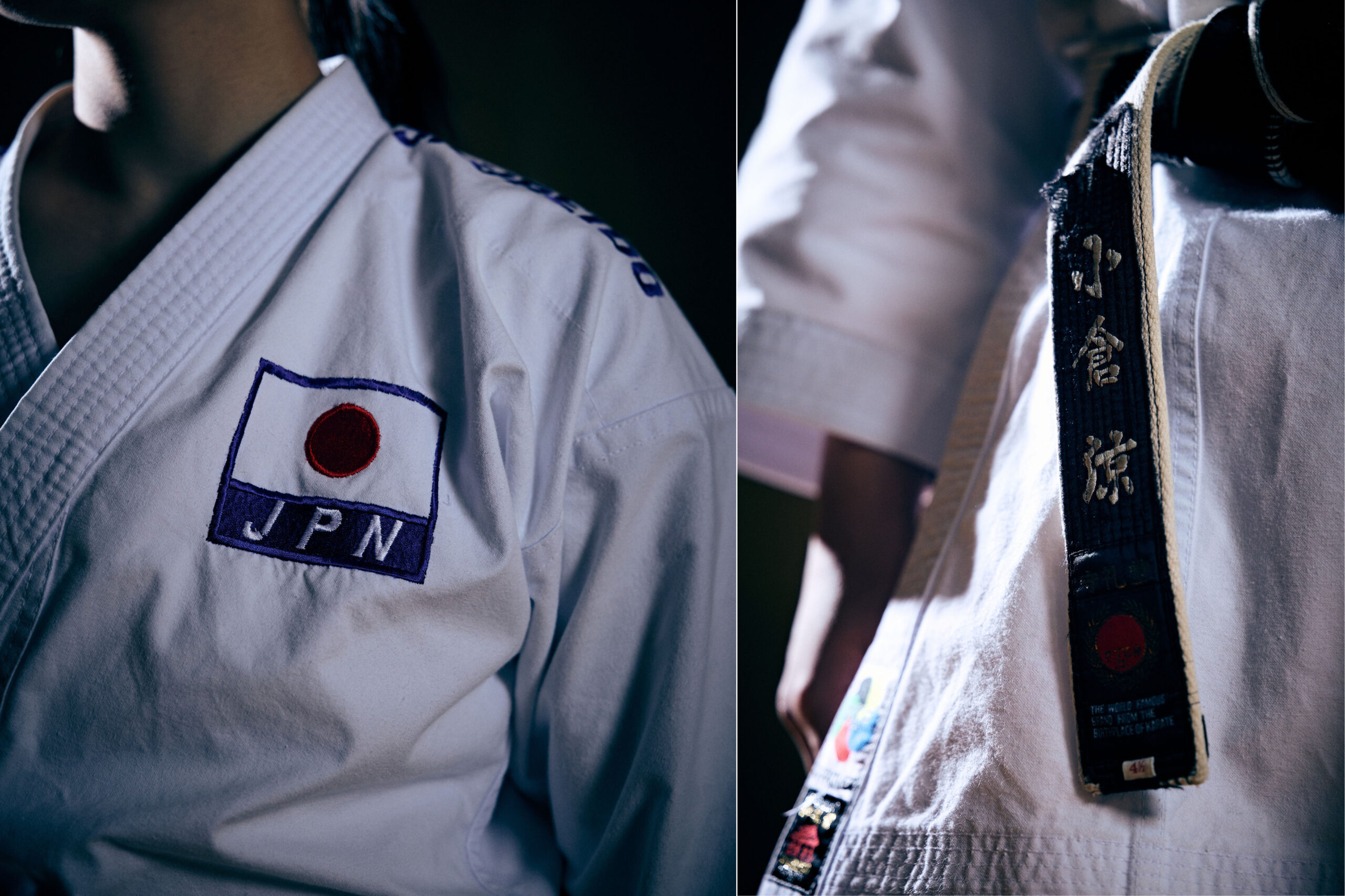
Oddball with an elusive personality
――Please tell us about your personal side from here. What kind of personality did you have as a child?
I was naughty! I used to play with my brother, so I was always running around outside. I don’t think I took my schoolwork very seriously.
――How do you see your personality?
I’m laid back…, but I’m also impatient. I think I’m an oddball with an elusive personality. My friends often say to me, “I don’t know what you’re talking about”.
――Is there anything you’ve been into lately?
I’m obsessed to Chikawa! I have stuffed animals in my room, and I also have stationery that I use at the school where I am a teacher. I give the kids a Chikawa stamp when they’re done with their work. Collecting stamps is also a fun time.
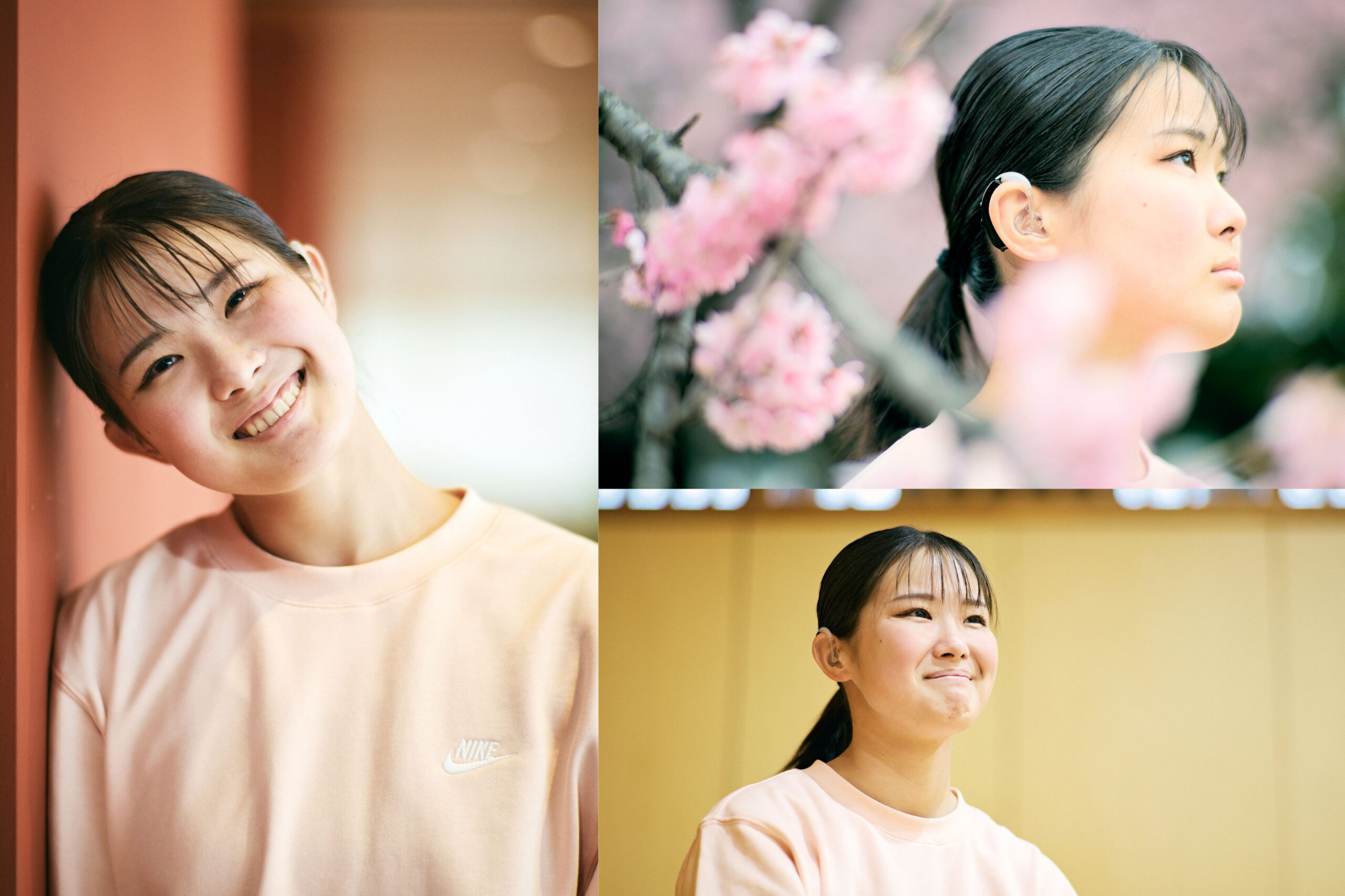
――How do you spend your days off?
I watch Netflix, go to the gym, hang out with my friends. I watch a lot of different genres on Netflix, but the one I’ve been watching recently is the anime “Fullmetal Alchemist”. The other day, I cried watching “Orange Days”. Basically, I’m an indoor person.
――When you find yourself in a negative situation, how do you resolve that?
I’m a person who forgets everything as soon as I go to sleep, so I will go to sleep in that situation! Also, I will do some exercise. I will work up a good sweat by doing karate or going to the gym. This will help me relieve stress.
――So karate is also a great way to relieve stress.
Karate is not just practice or a match for an athlete, but a karate that teaches children. It’s a lot of fun to teach karate, and it’s soothing to see the positive attitude of kids. It’s a good stimulus.
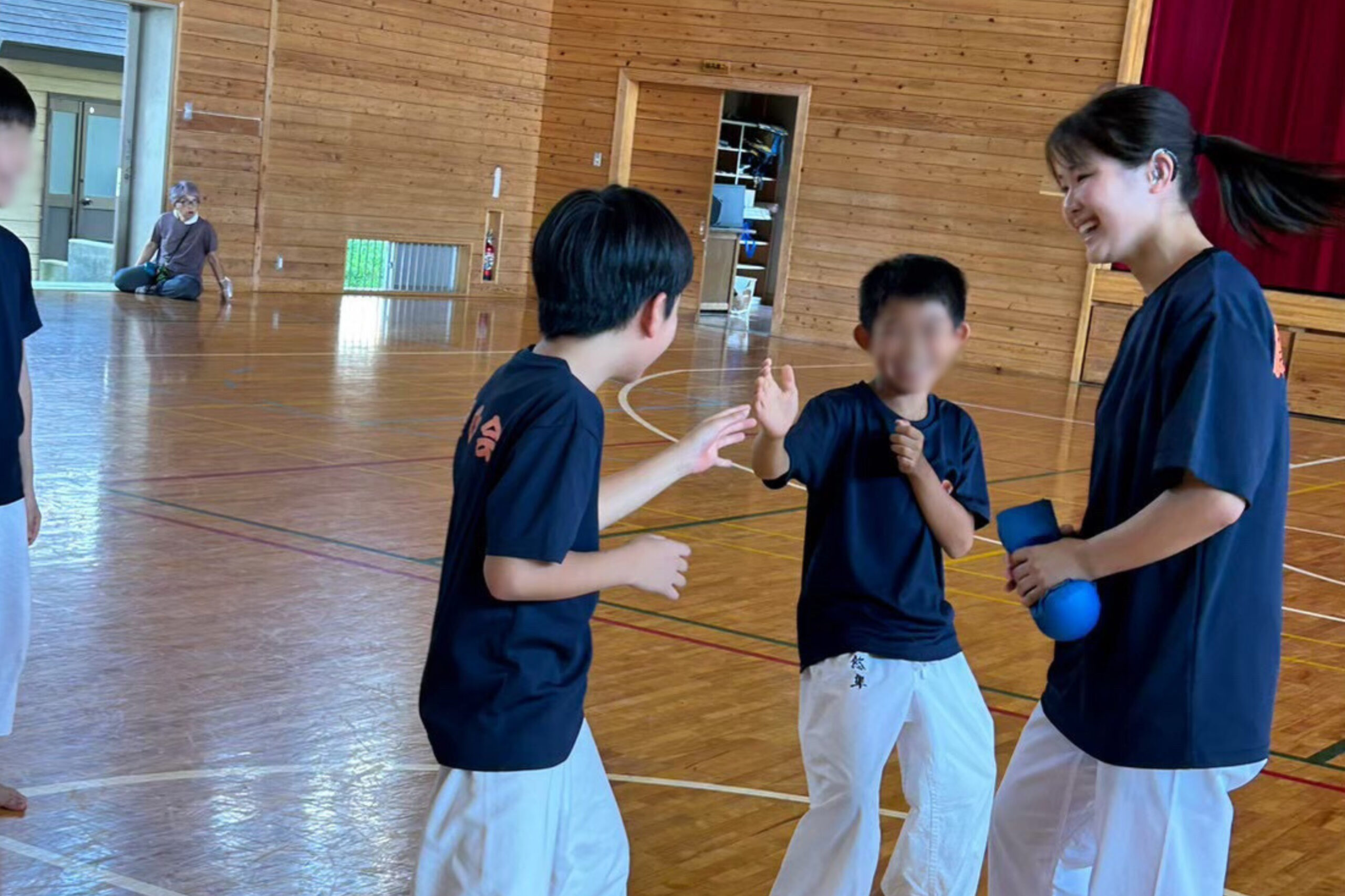
An environment where you can feel the growth of children up close
――You are currently working as a teacher at your alma mater, Sakado School for the Deaf, but have you dreamed of becoming a school teacher since you were a child?
I don’t quite remember, but it seems that when I was in elementary school, I declared that I was going to be a school teacher. After that, when I was in junior high school, I was asked what I want to become in the future, and I answered that I wanted to be a school teacher in the same way. This is firmly ingrained in my memory.
――Why did you want to become a teacher?
Actually, my first thought was, “I want to be a civil servant.” When I was a child, I always passed by the city hall at 5 p.m. and all the lights went out. This means that city hall employees and civil servants can go home at 5 p.m.! That’s why I wanted to be a civil servant. But when I was asked what does a civil servant do…, that’s where I came across becoming a teacher.
――It’s a surprising answer! I was imagining the answer that you like children.
I’m sorry. But now I’m really enjoying my work.
――You have been teaching since last year, but what is your impression of actually becoming a teacher?
I knew that being a school teacher was a very tough job, but in the end, I made a firm decision to become a teacher. Just as I have imagined it, it is hard work. However, it is fun to be able to see the growth of the children up close even in such difficult times.
――It’s a rewarding and engaging work environment, isn’t it?
Above all, I feel fortunate to be in a position to create and support that growth. I am blessed to have the support of other staff members, and to be able to work while feeling very rewarded. It’s been almost a year since I first met the current students in April last year, but they are completely different from those days. As a teacher, there are many things that I wish I had done and that I should have done. I want to become a teacher who can encourage them even more.
I’m currently a co-teacher of a 4th grader, but the 4th graders are still cute and childish. There are times when I think it’s a little troublesome, but they are cute, all things considered!
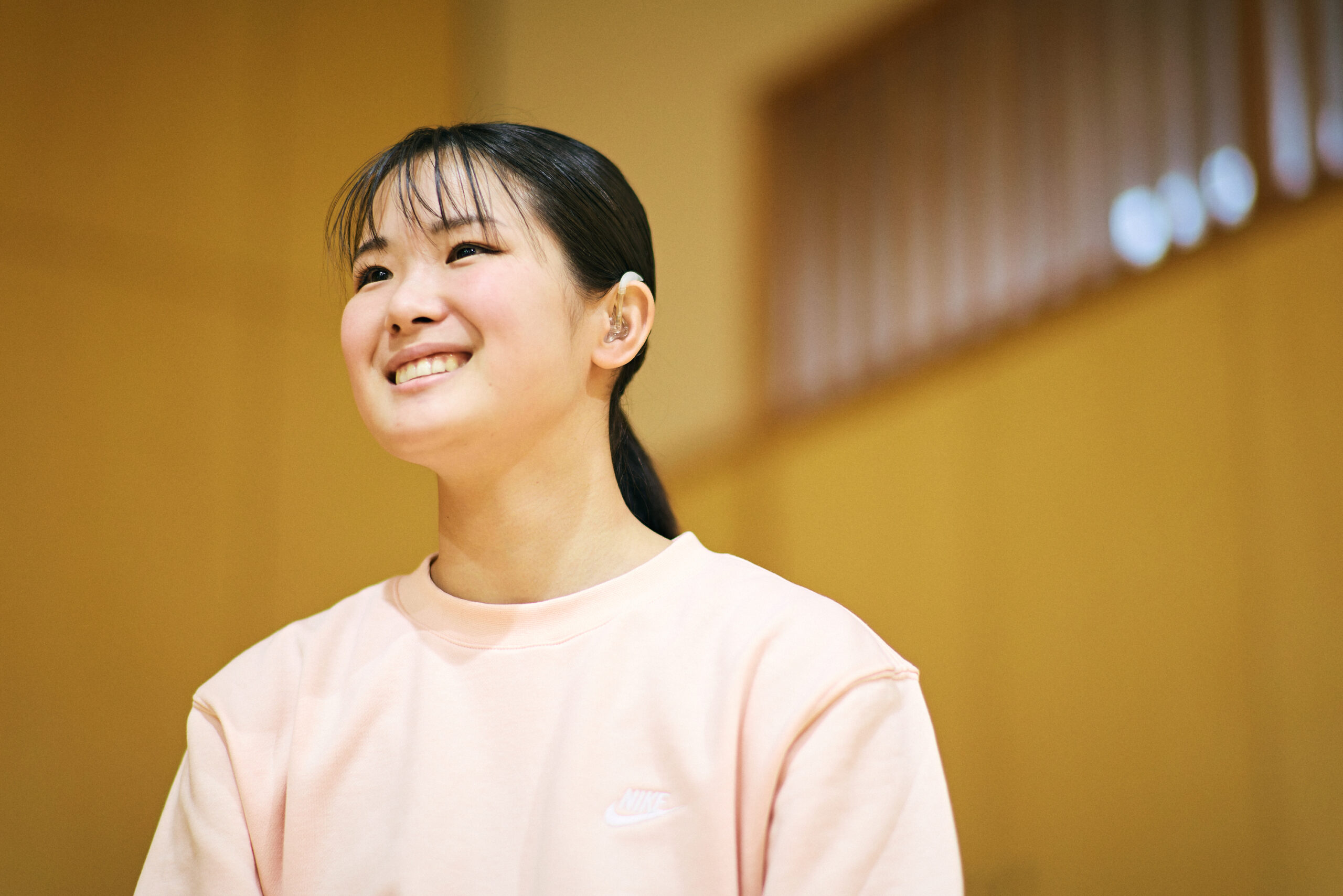
Small daily efforts to achieve maximum results
――Do you have a motto or favorite quote?
It is “Constant dropping wears away the stone “. Each drop of rain is a small force, but if it accumulates, it can pierce even a large hard object such as a stone, and it is a phrase that teaches us that daily accumulation and small efforts are important. Thanks to these words, I have been able to accumulate steady efforts so far, and I have made it my motto in the sense that I tell myself that I must continue to make small efforts.
――Do you have any karate practitioners you admire?
I have a strong desire to “go my own way”, so I don’t have much admirers…. However, there is one athlete that I think is cool, and that is Junna Tsukii, who won the kumite at the World Games 2022. Junna Tsukii has a cool kumite style. She is shorter and smaller than me, but she is the type of person who is not afraid to attack opponents who are bigger than her. She has had a lot of injuries, but she has overcome them many times and has come back. I think it’s really cool to see her continue to stand up without giving in.
――Do you have any athletes that you get along with?
It’s Kenji Mori, who represents the same Japan team in deaf karate. I practice with him and talk to him a lot. I am impressed by the way he always aims high and goes to practice, and I respect him in many ways, such as the way he approaches karate. I would like to win a gold medal together at the Tokyo 2025 Deaflympics.
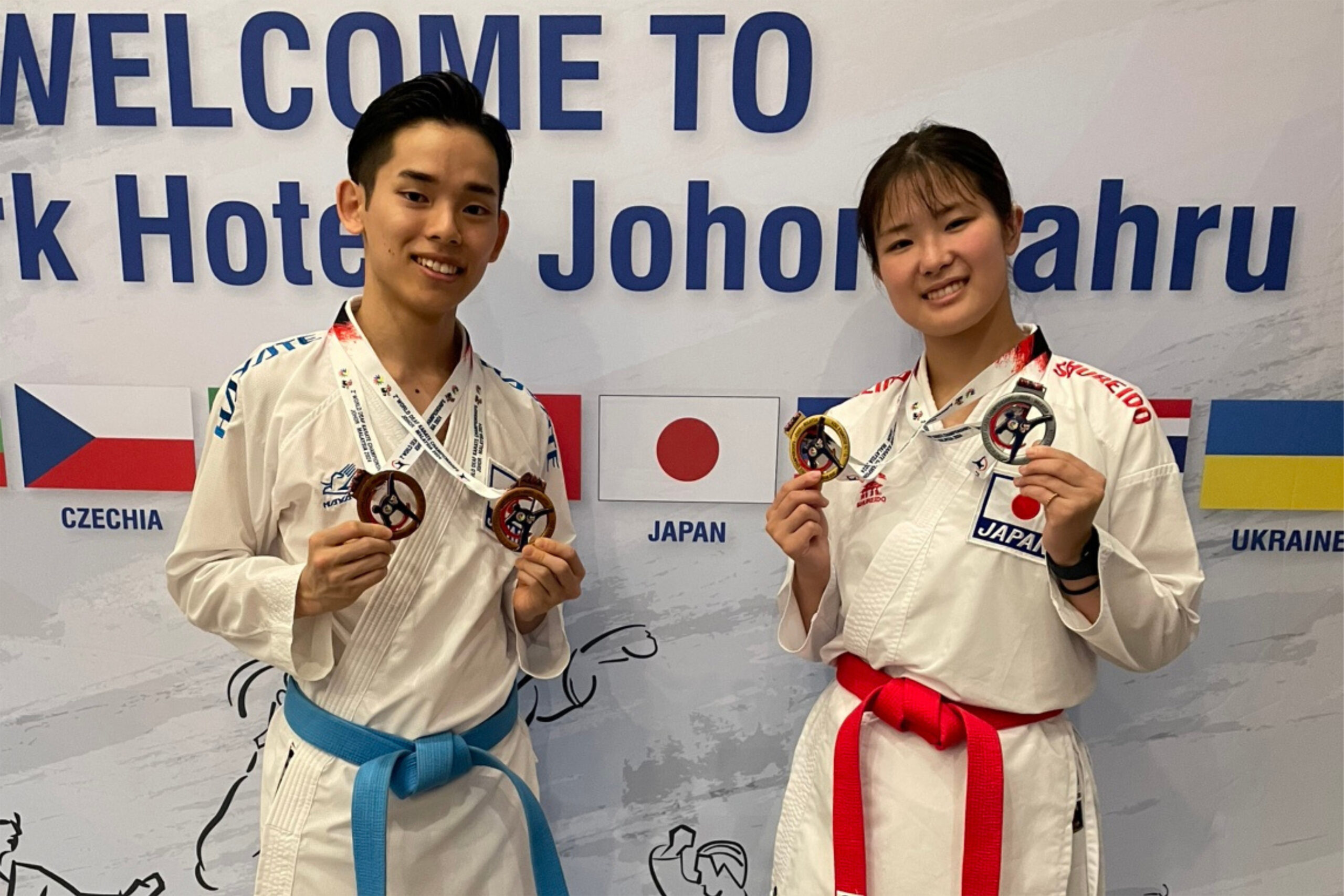
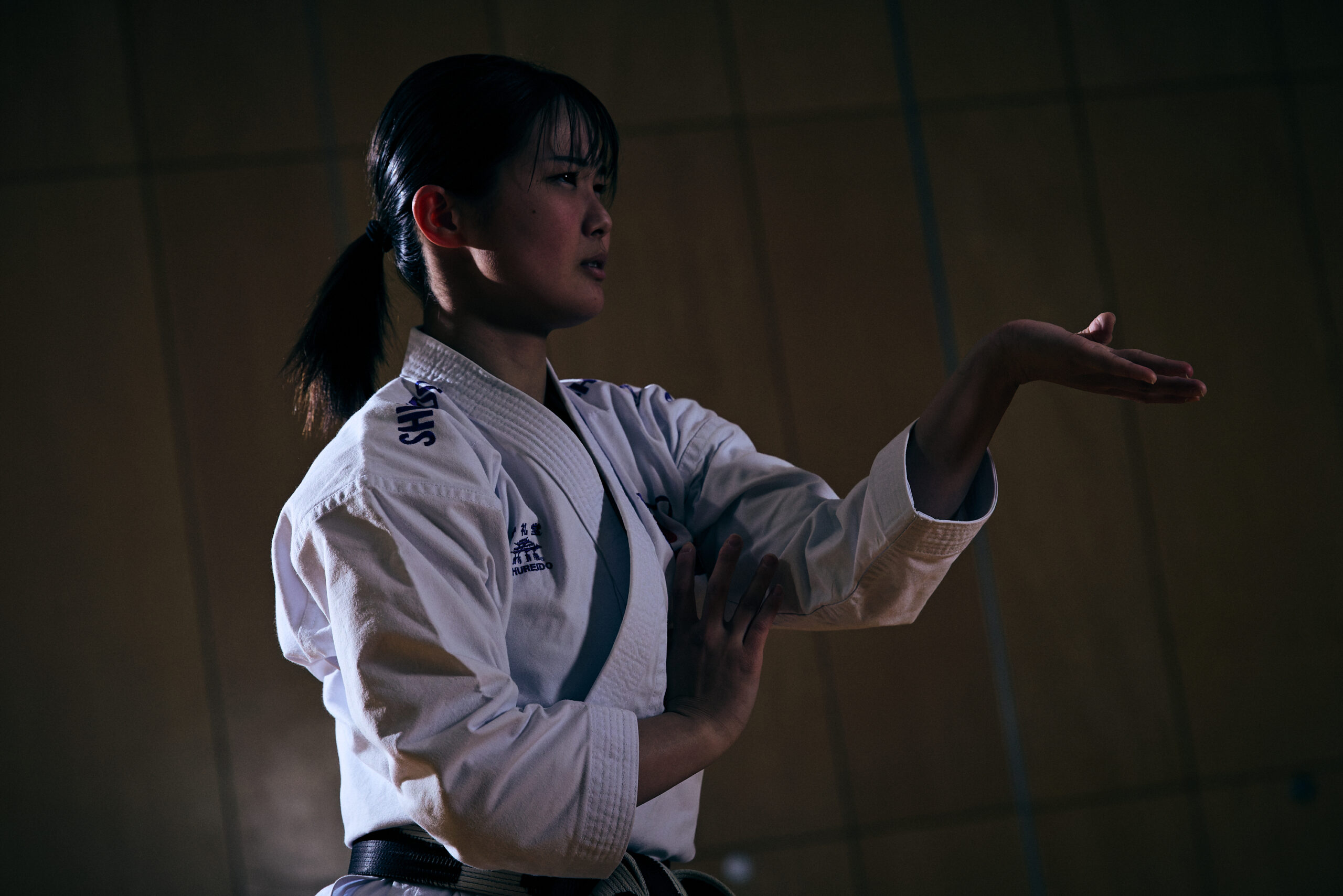
――Do you have any recommended or favorite players?
Well, I haven’t talked with him that much, but it would be Deaf athletics Maki Yamada! He’s good looking, has a good style, and his talks is always interesting, so I recommend him. There are high expectations for winning medals in various events in deaf athletics, so I am also looking forward to it. I would like Maki Yamada to win a medal as well, and I would like him to run in a way that he is satisfied with and impressive.
――Finally, do you have a message for readers who are looking forward to the Tokyo 2025 Deaflympics?
The Deaflympics is a festival of deaf sports with a total of 21 sports, including karate and track and field. Through various sport events and athletes, it may touch your heart. I will continue to make small efforts towards November so that I can touch everyone’s “hearts” with my best performance.
Deaf Karate will be held at Tokyo Budokan. Please come and see me win two consecutive events!
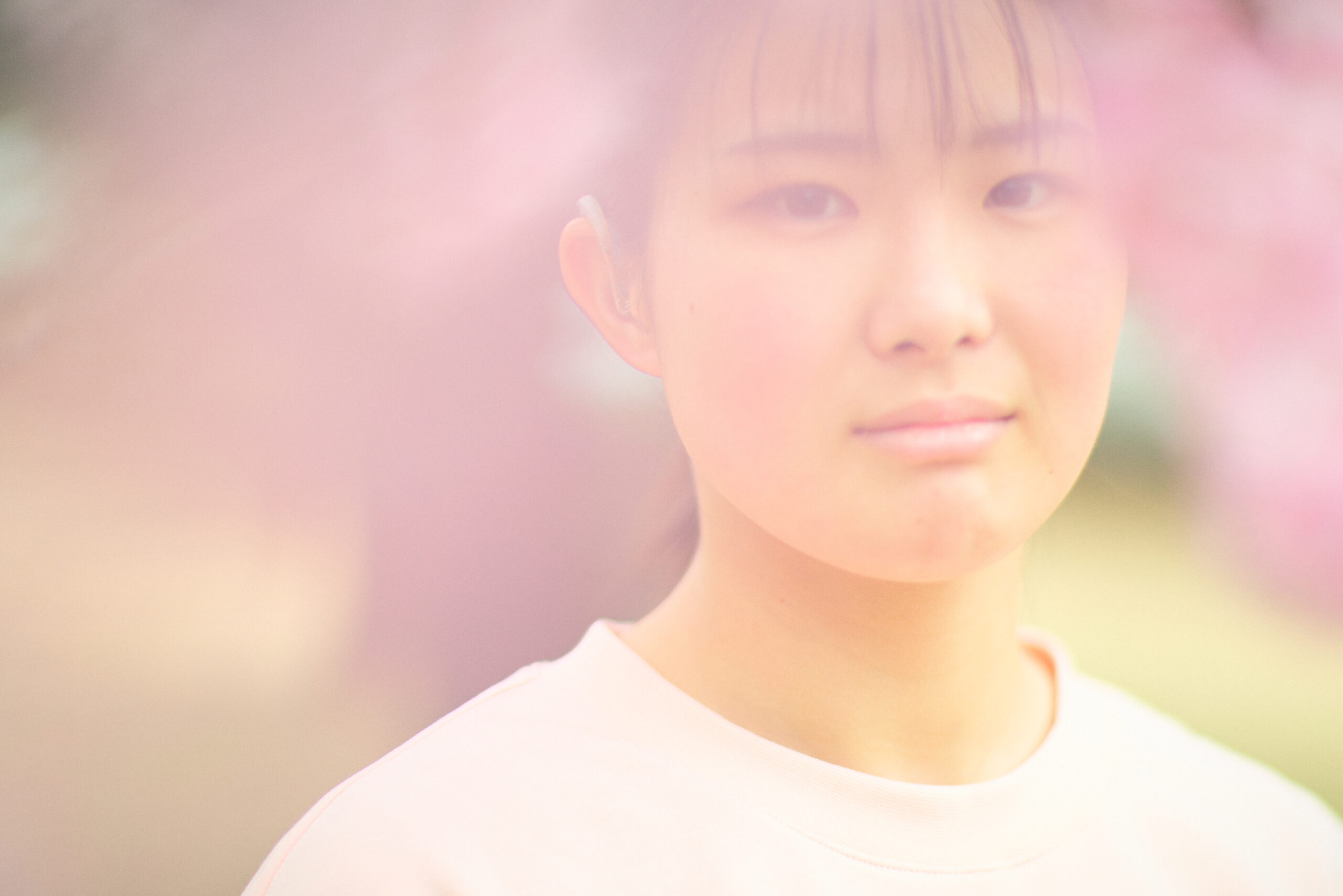
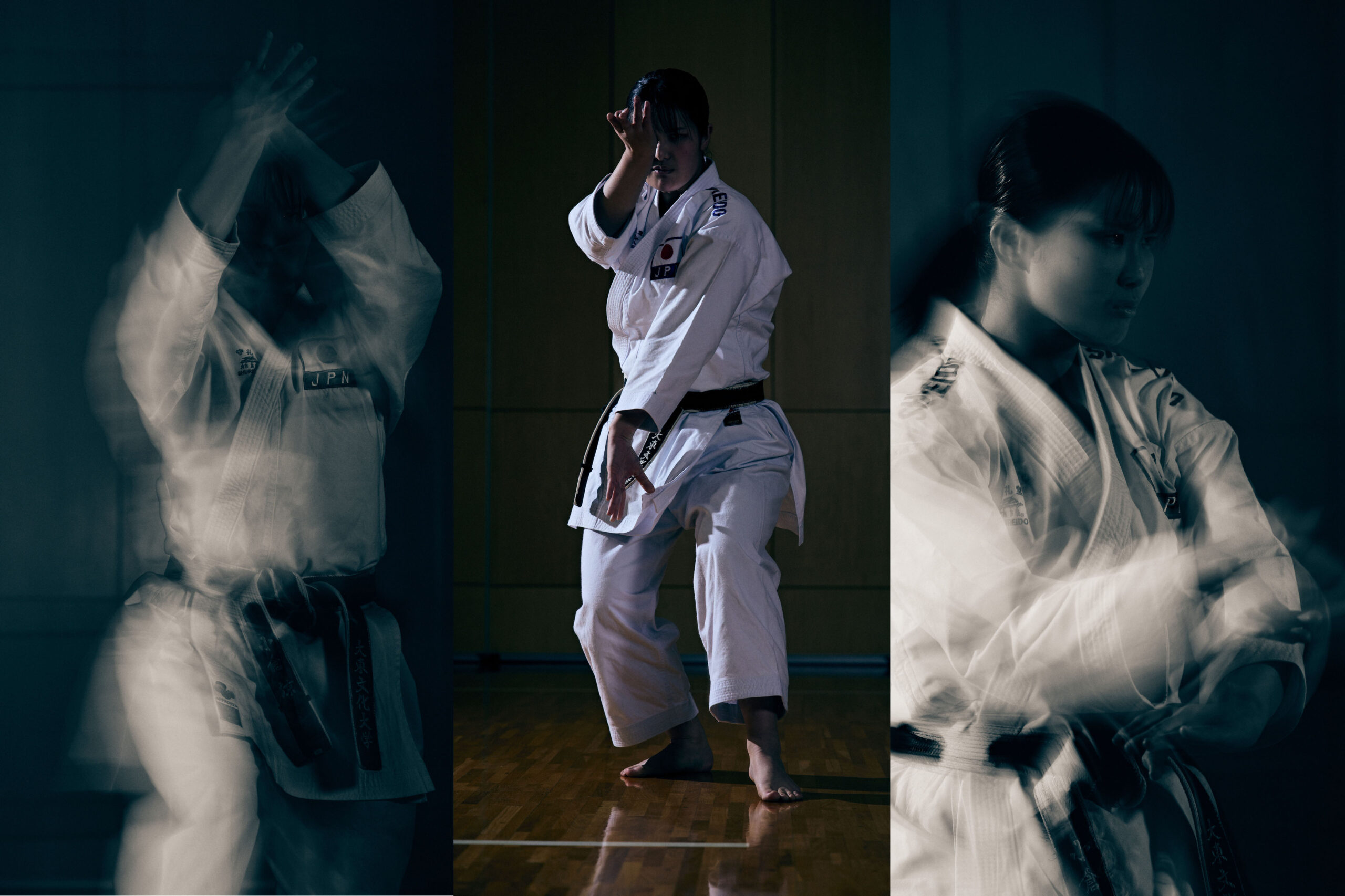
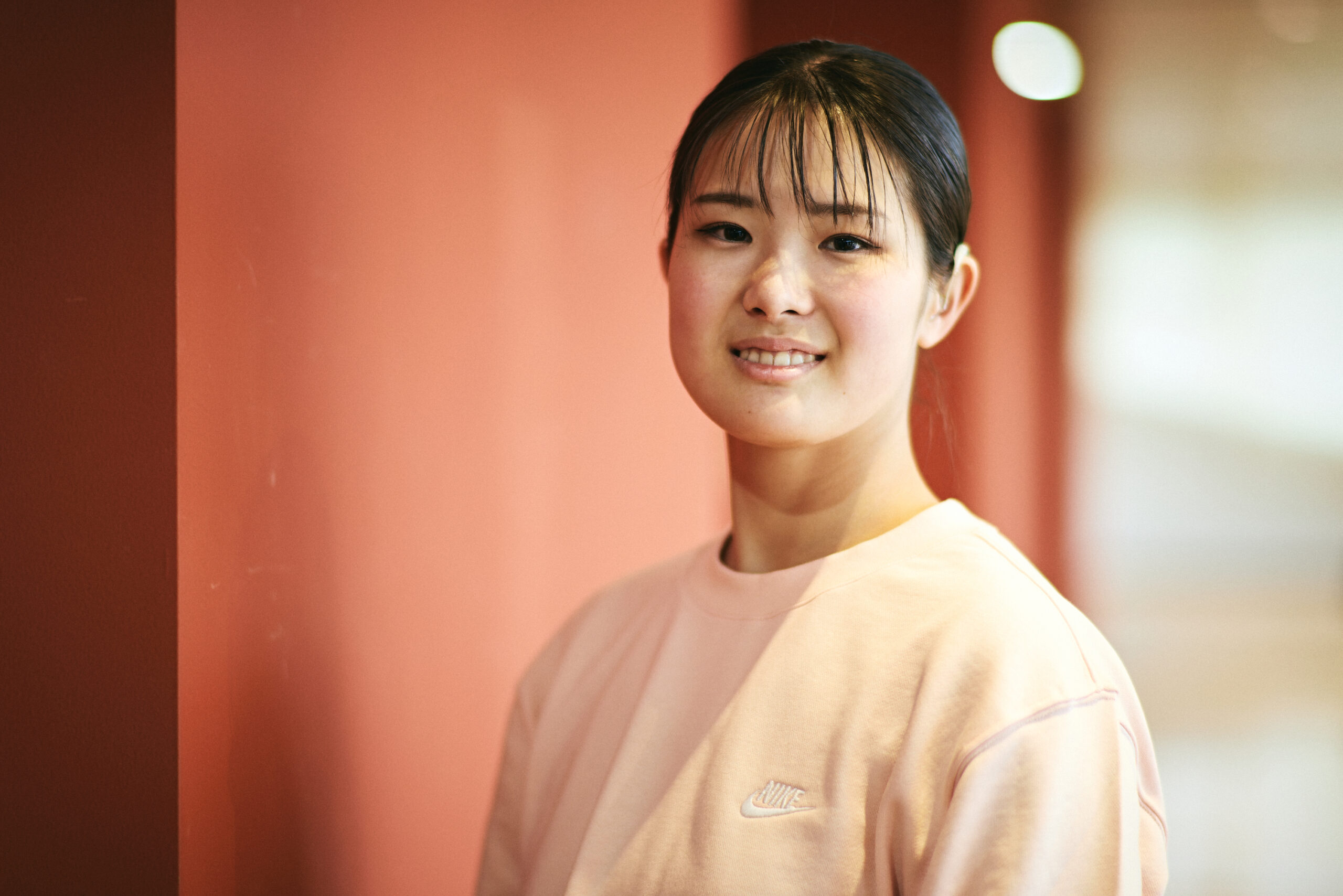

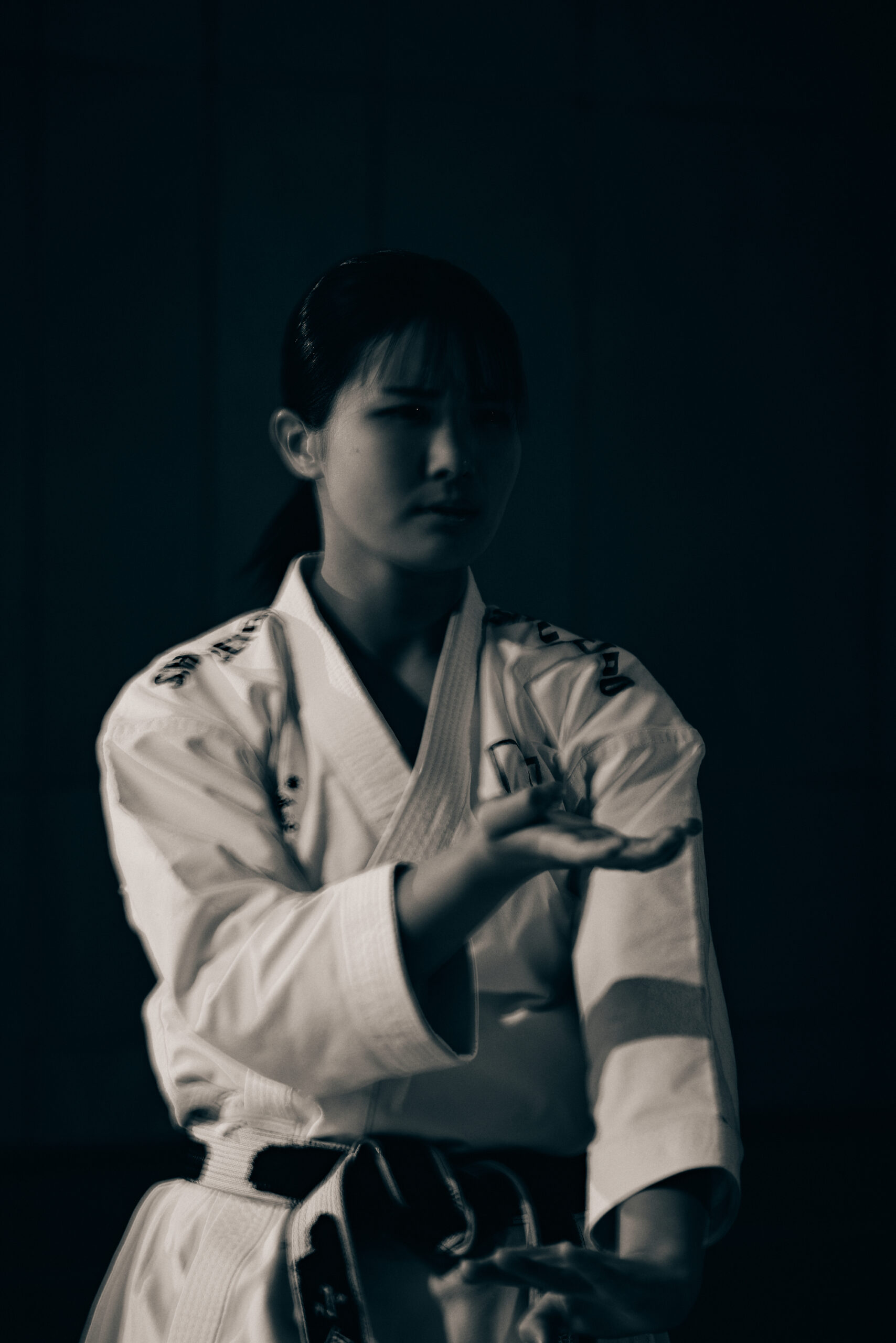
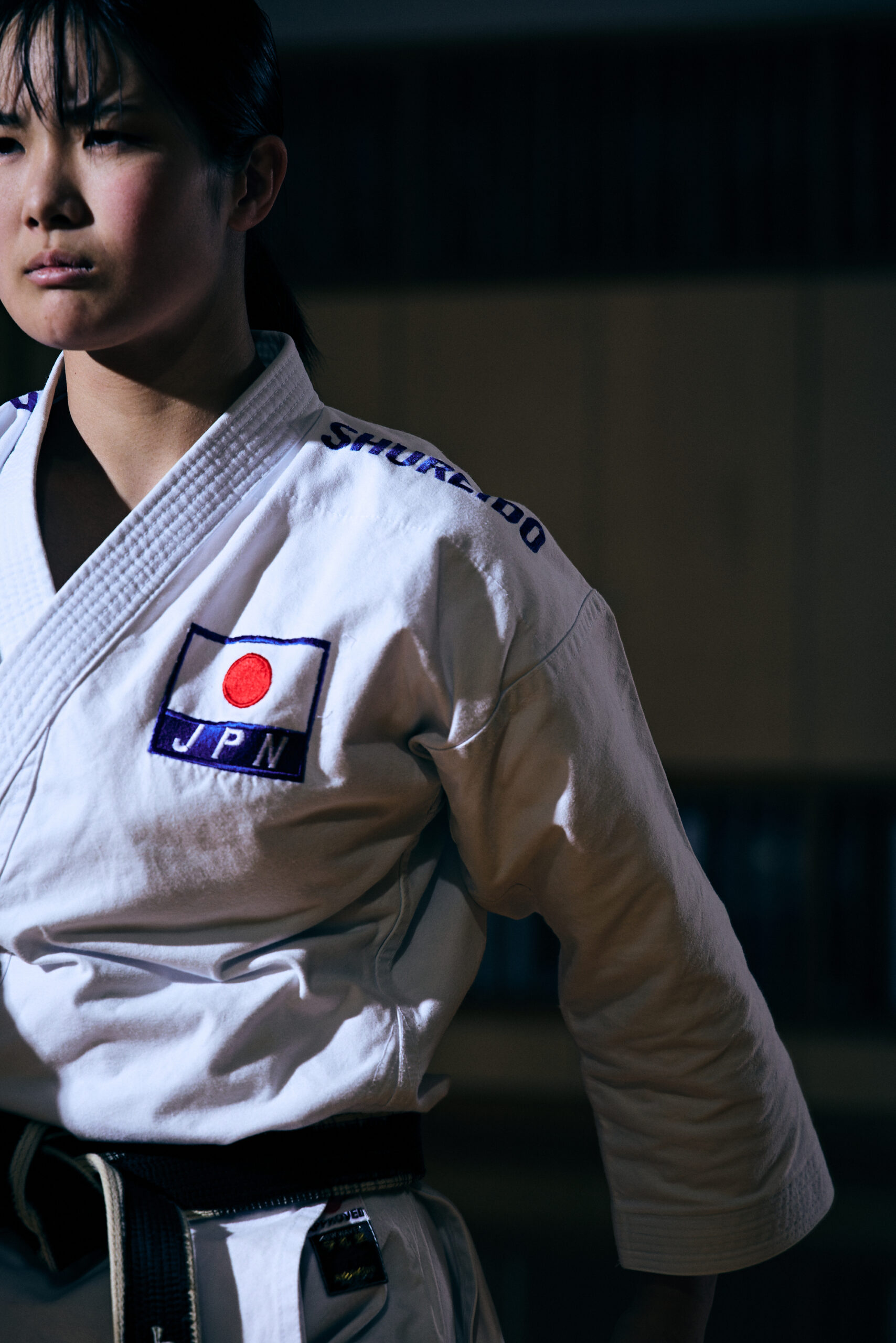
Instagram:ryokarate0320
text by Rieko Kimura
photographs by Uta Mukuo
Filming cooperation: Wako Sports Gymnasium

